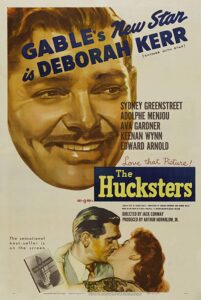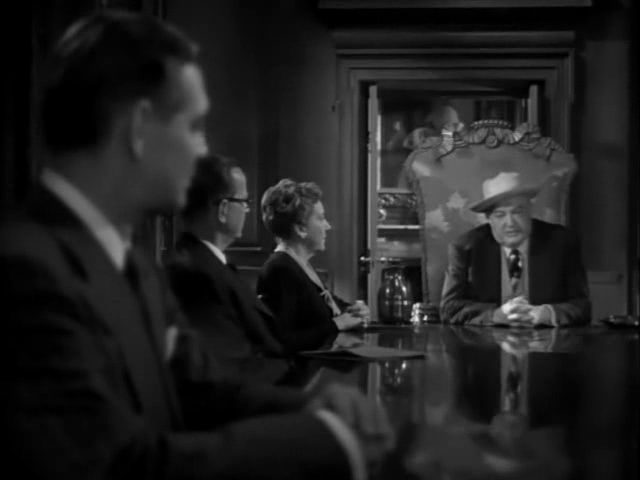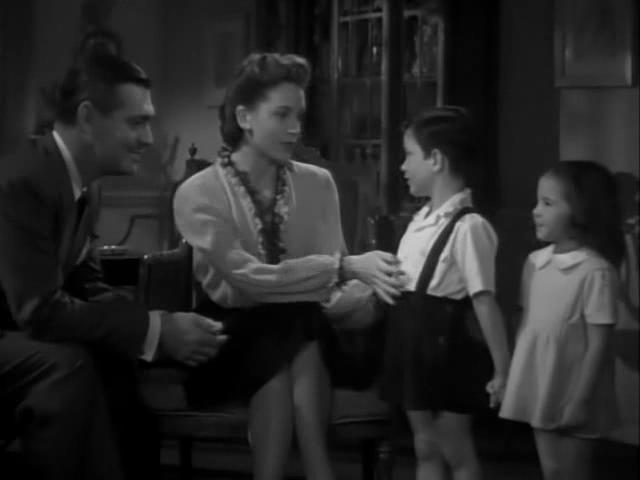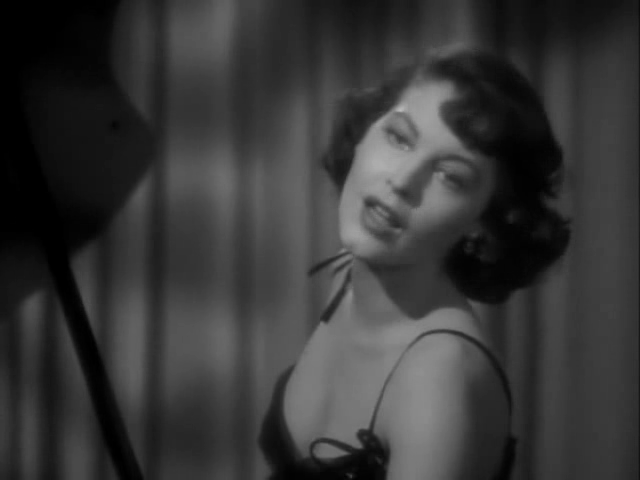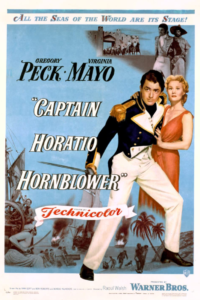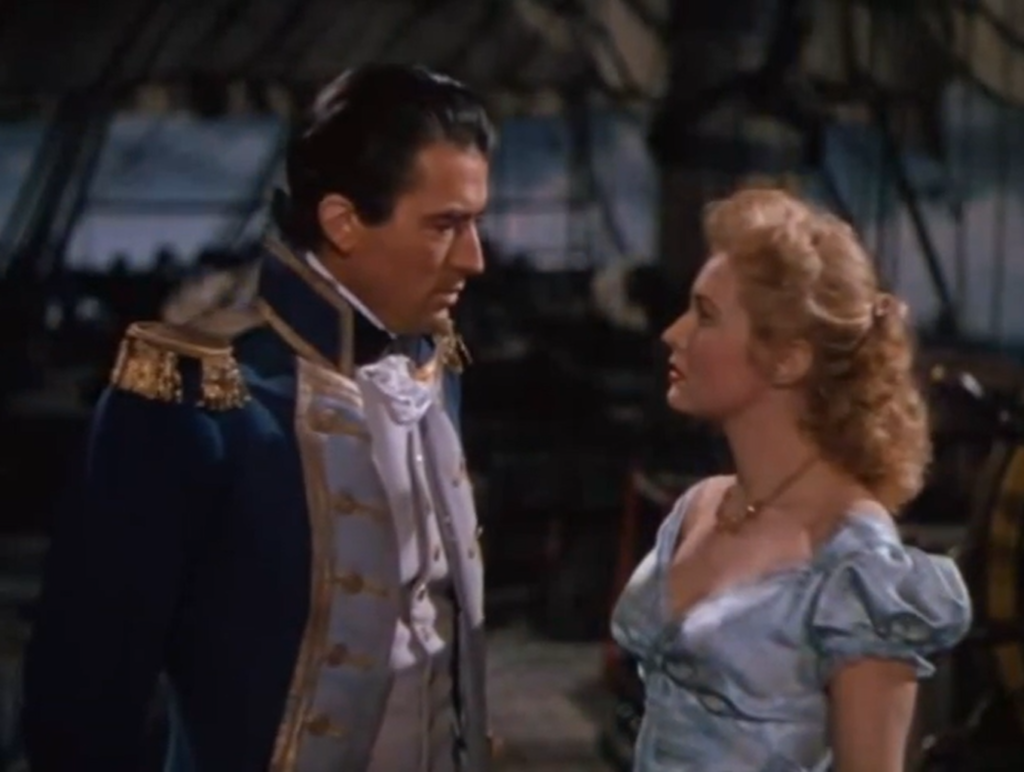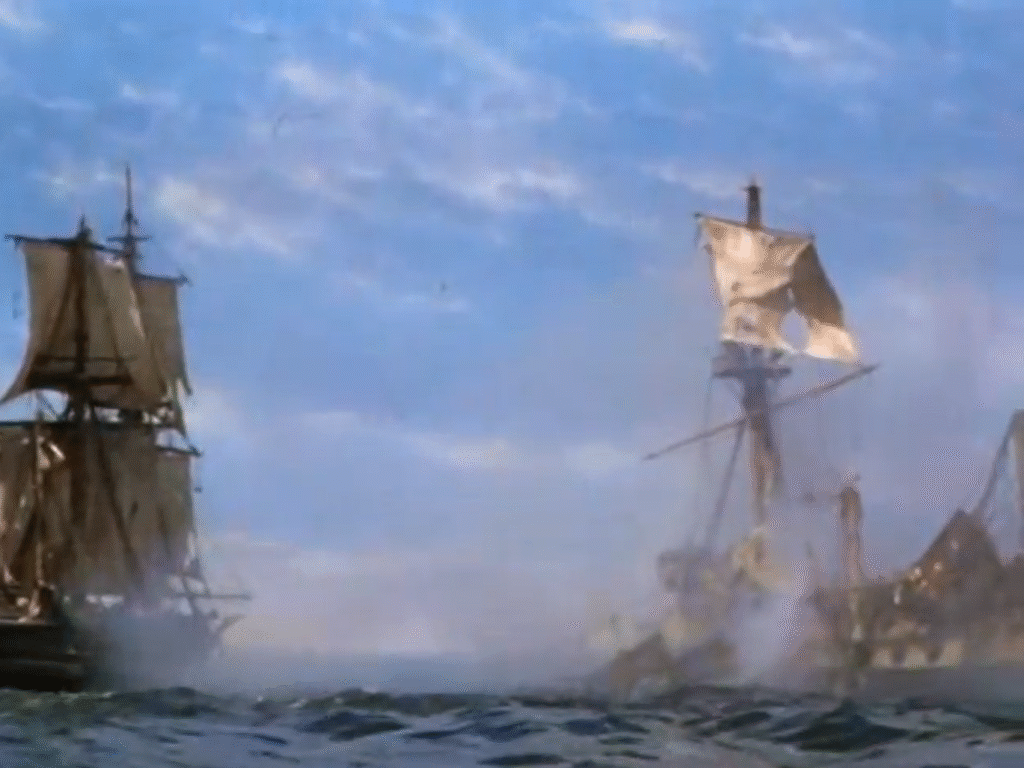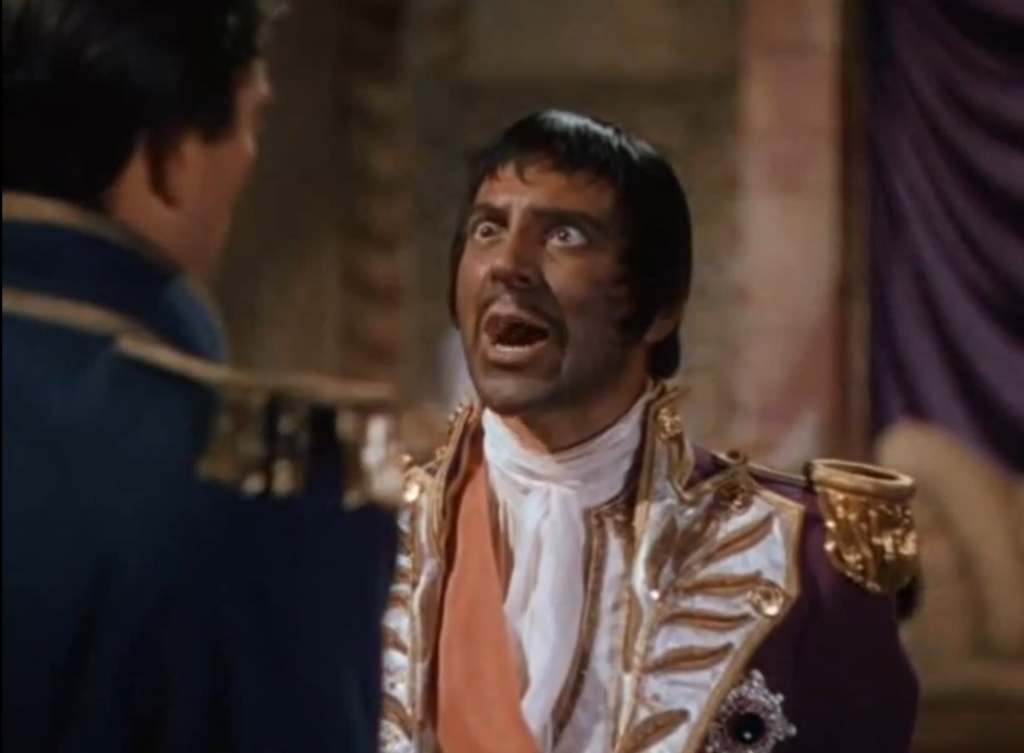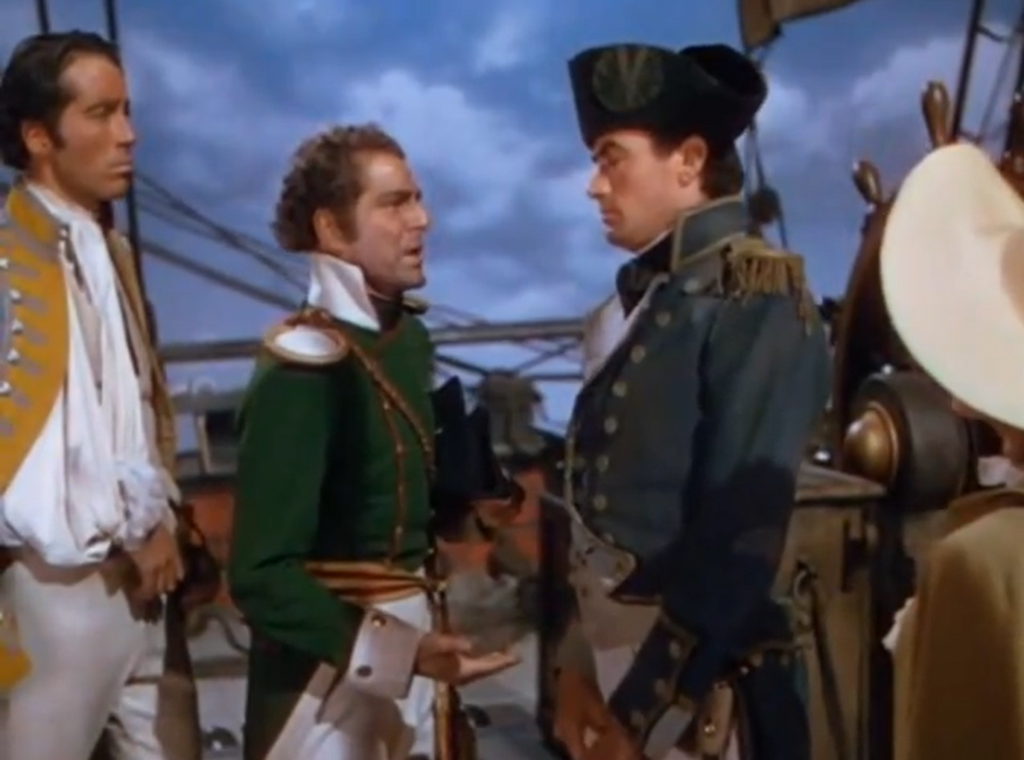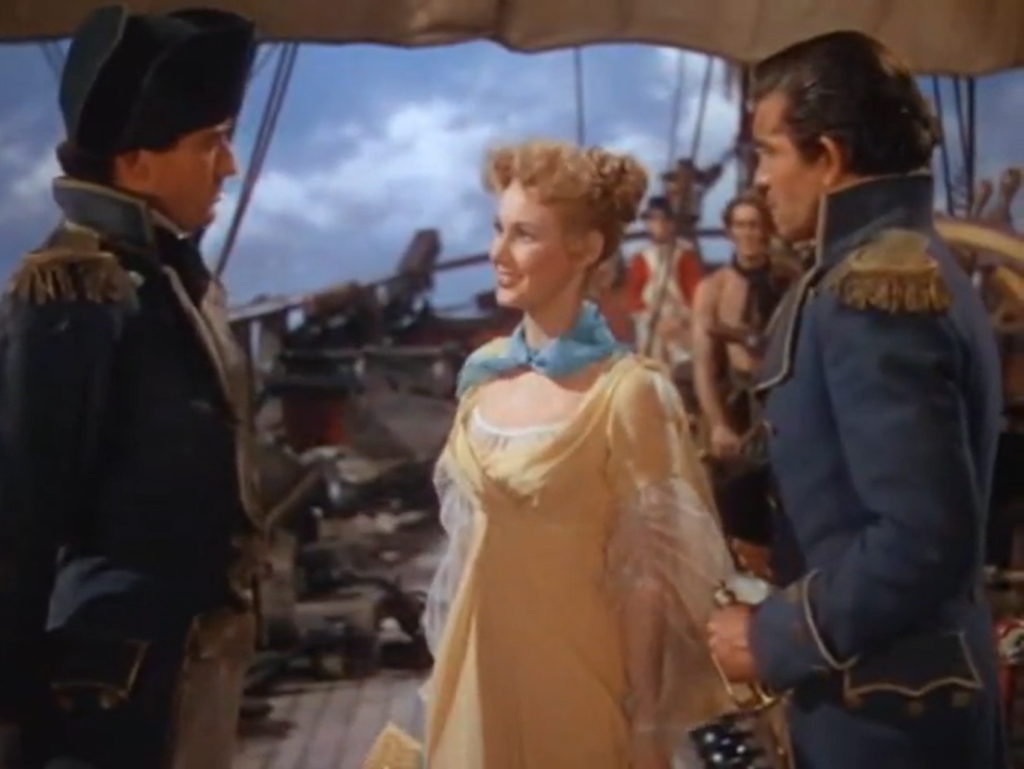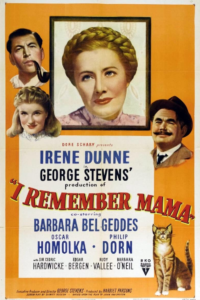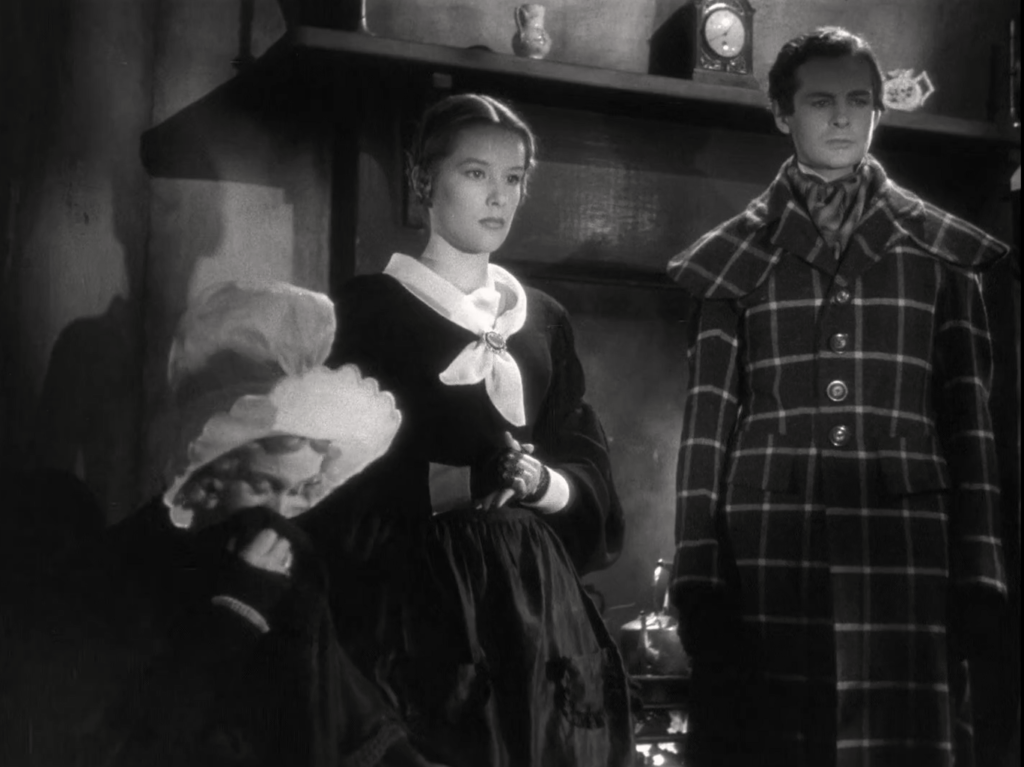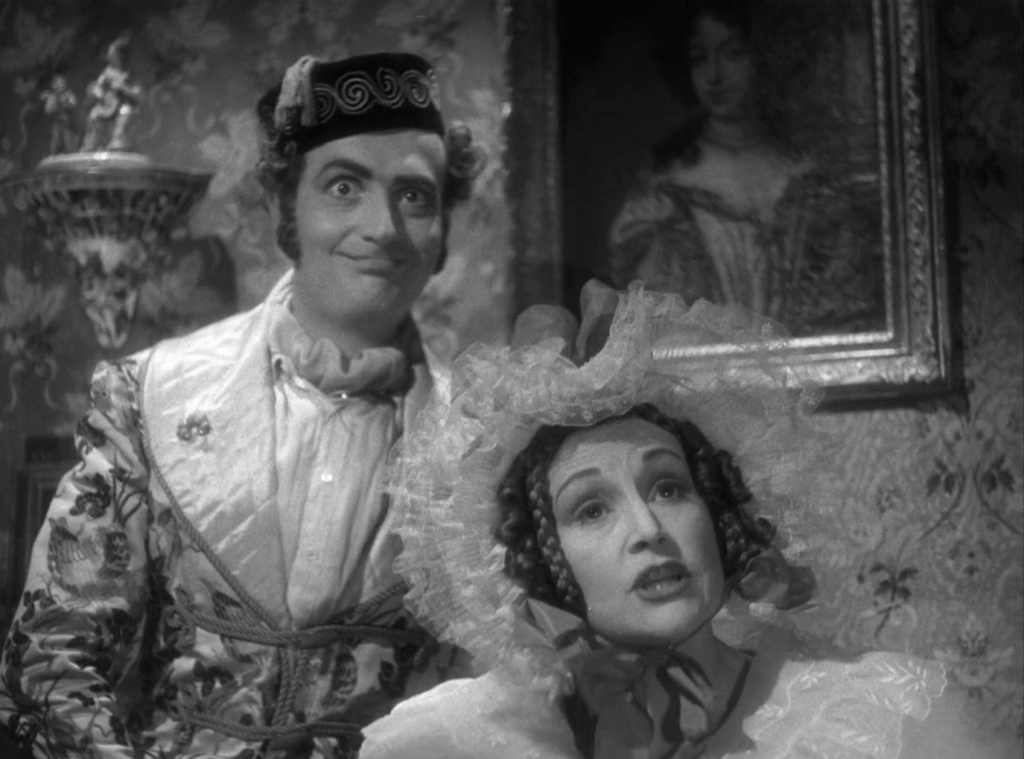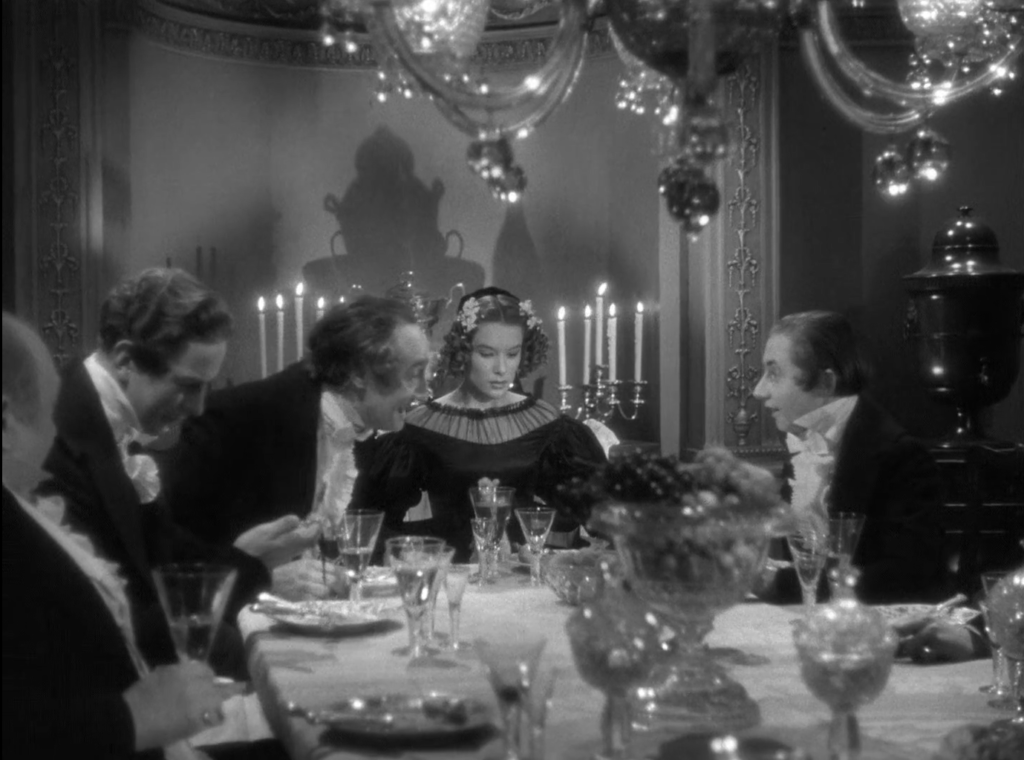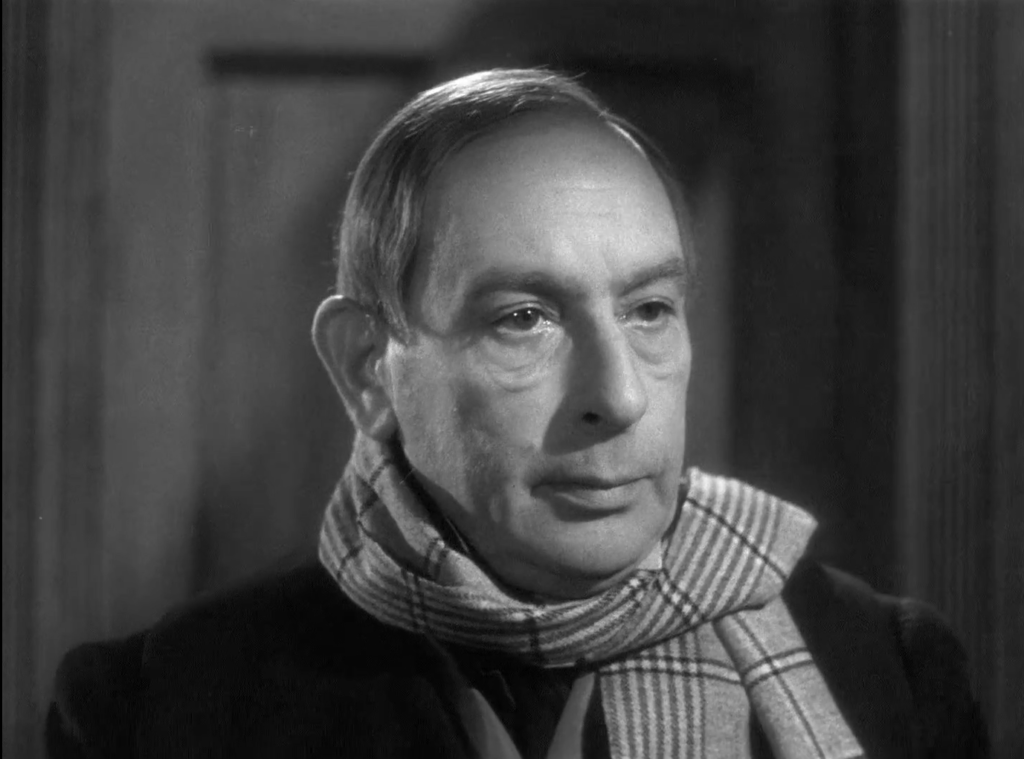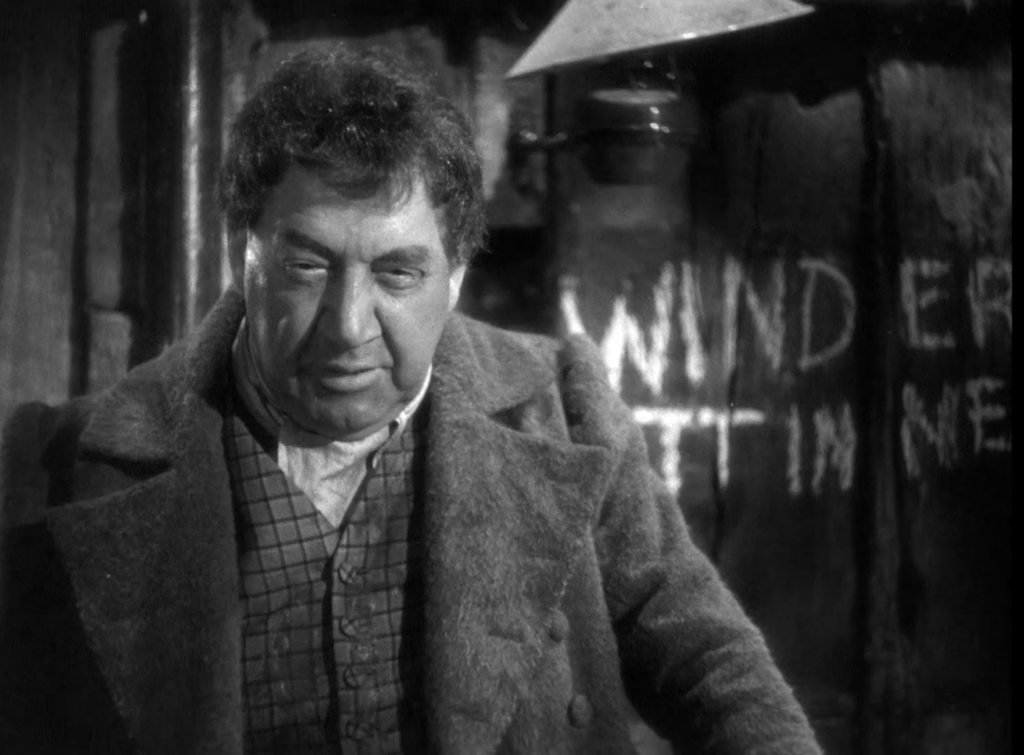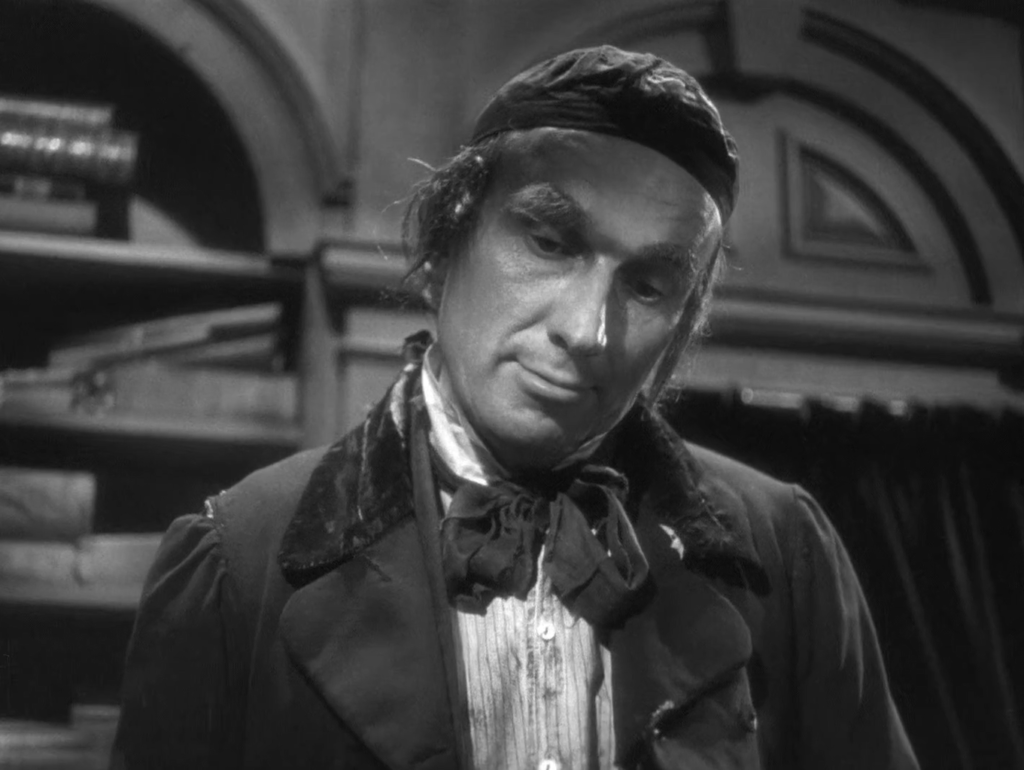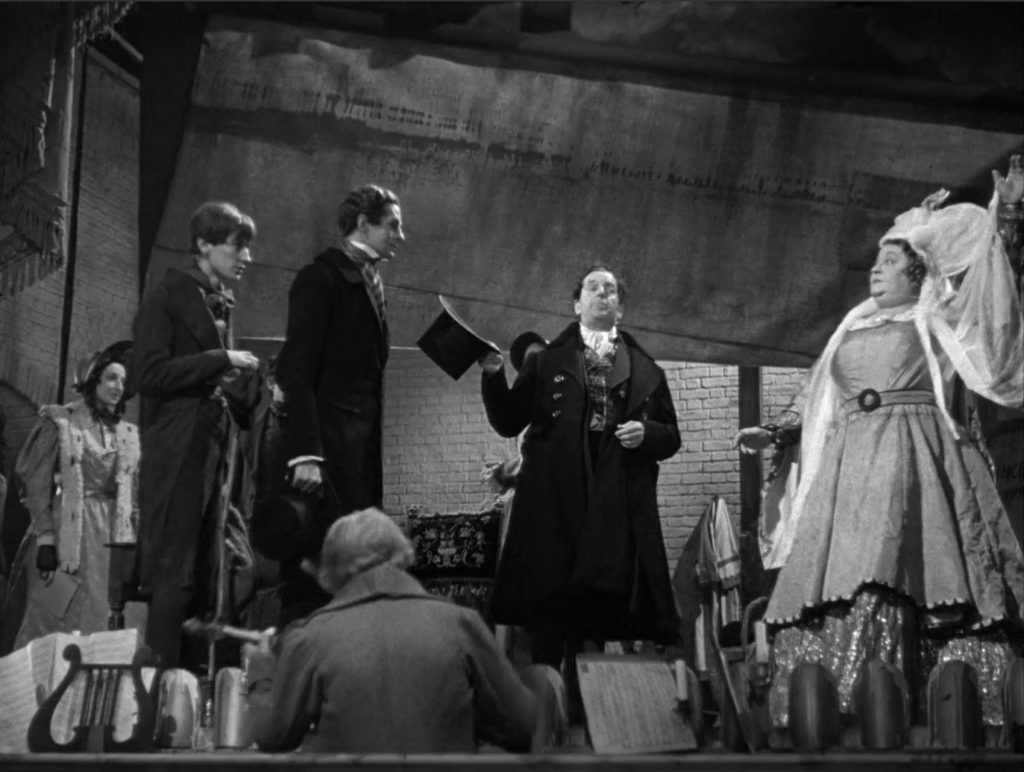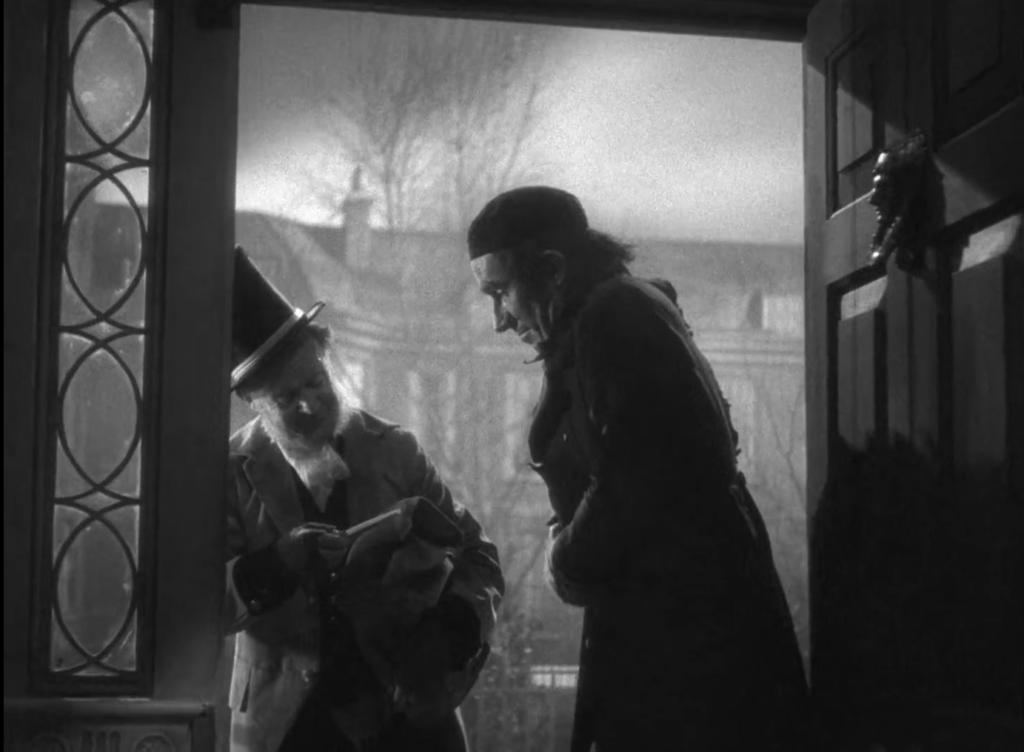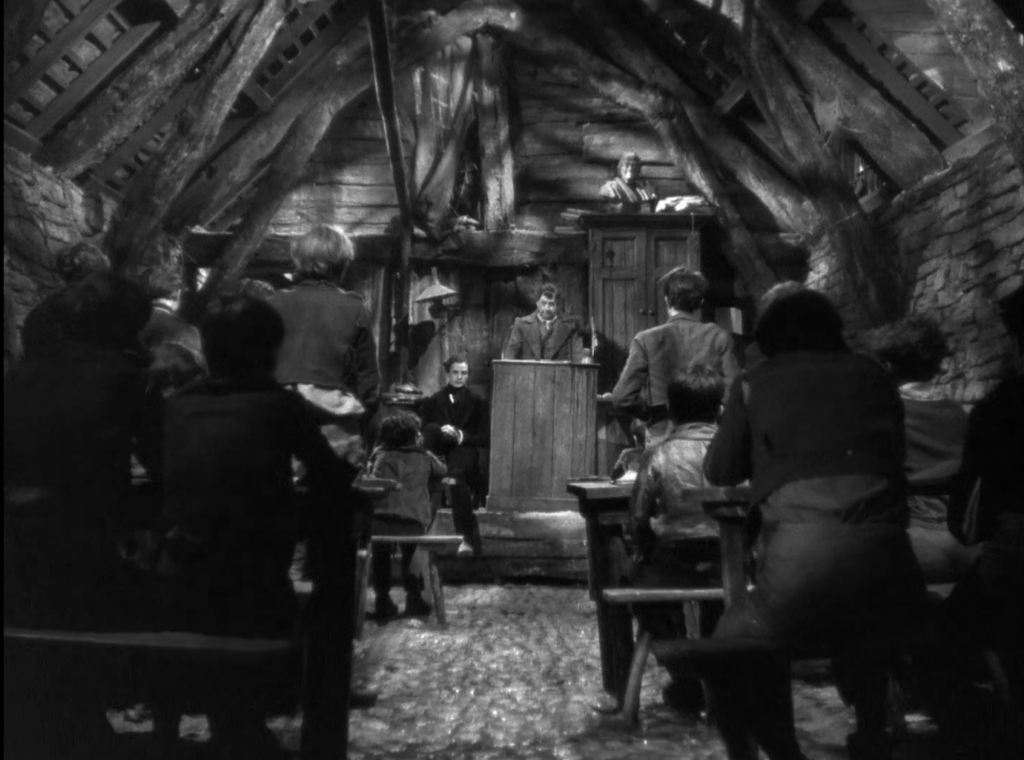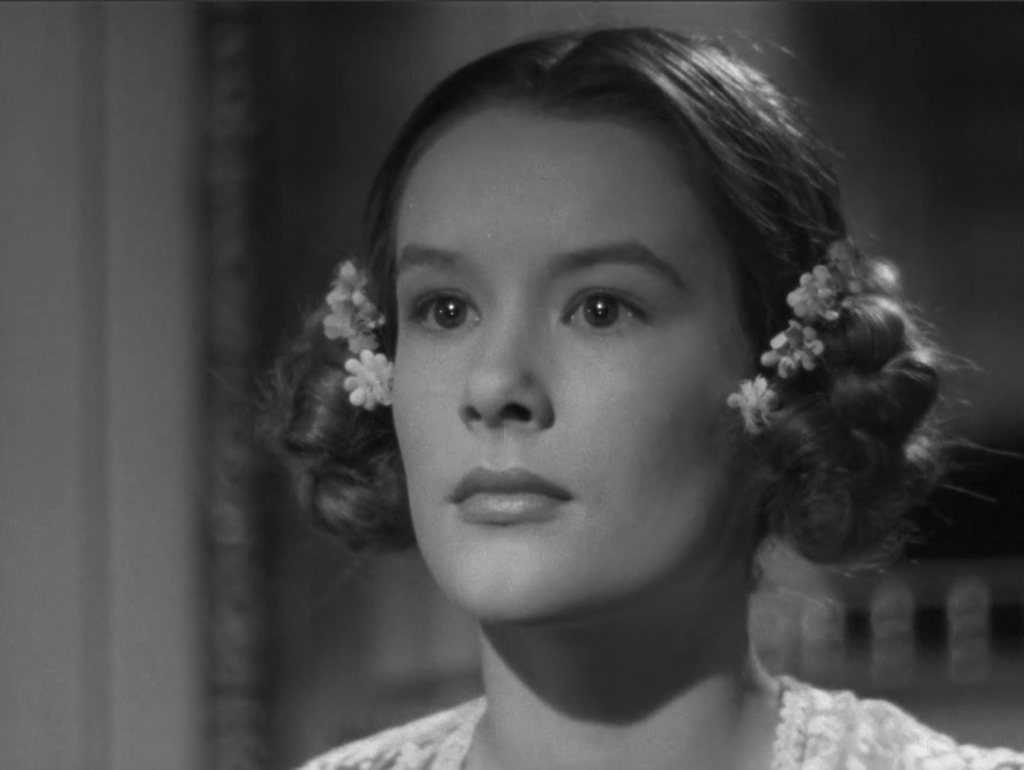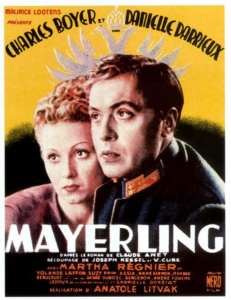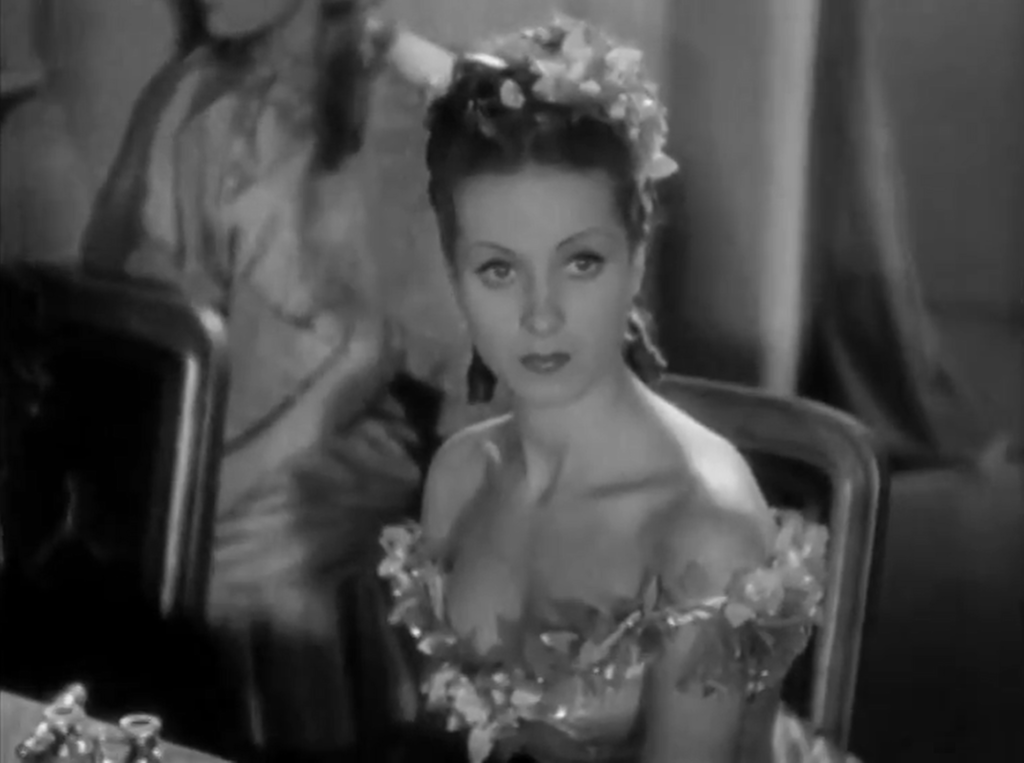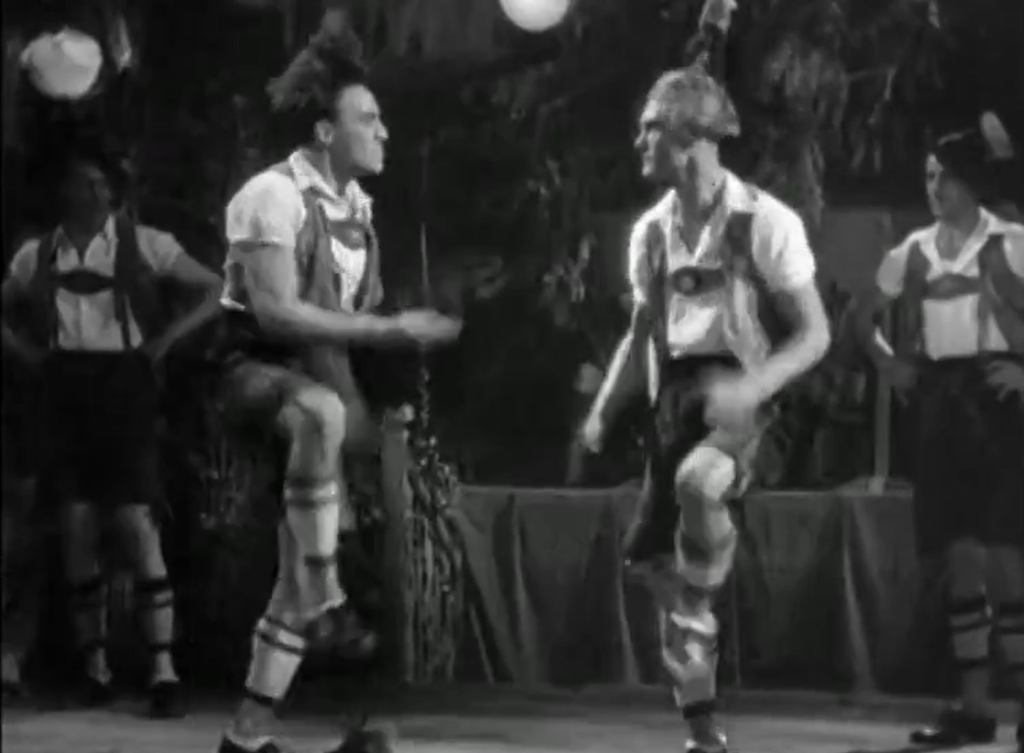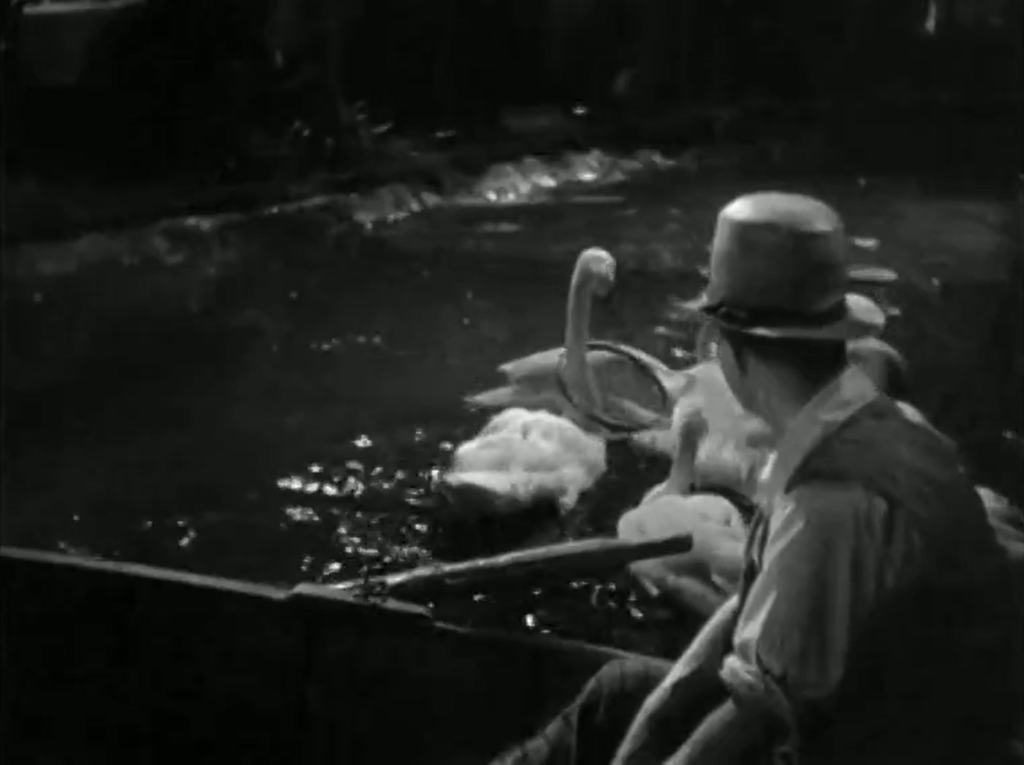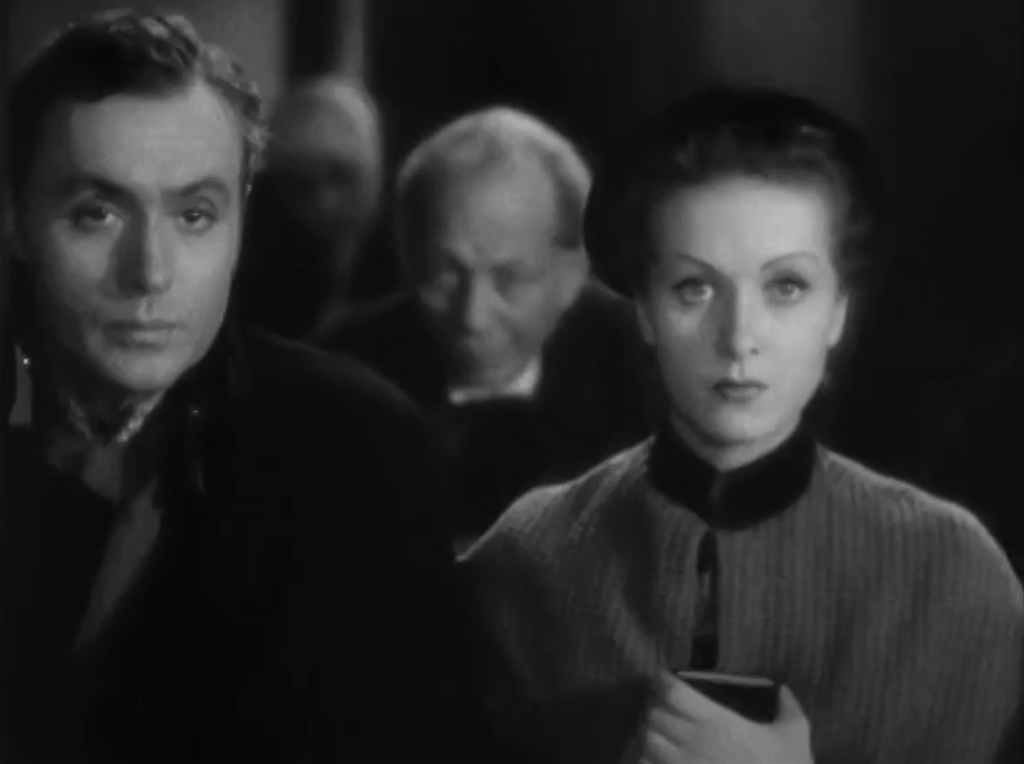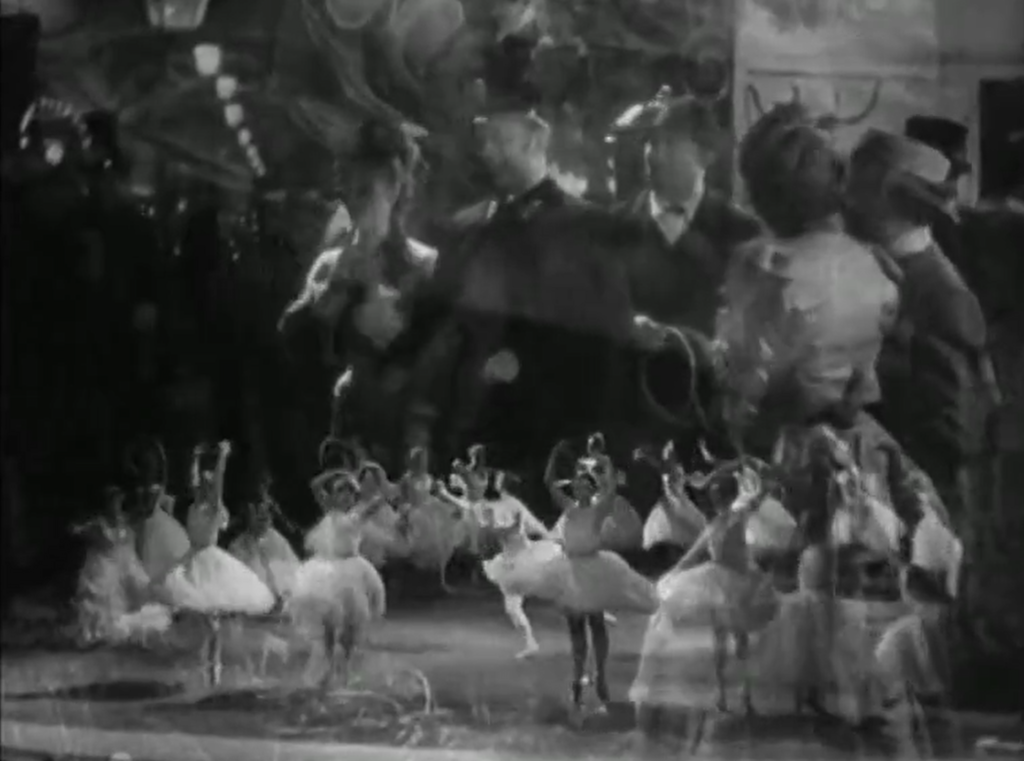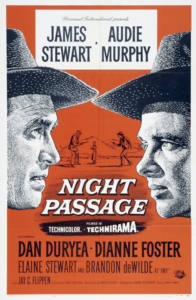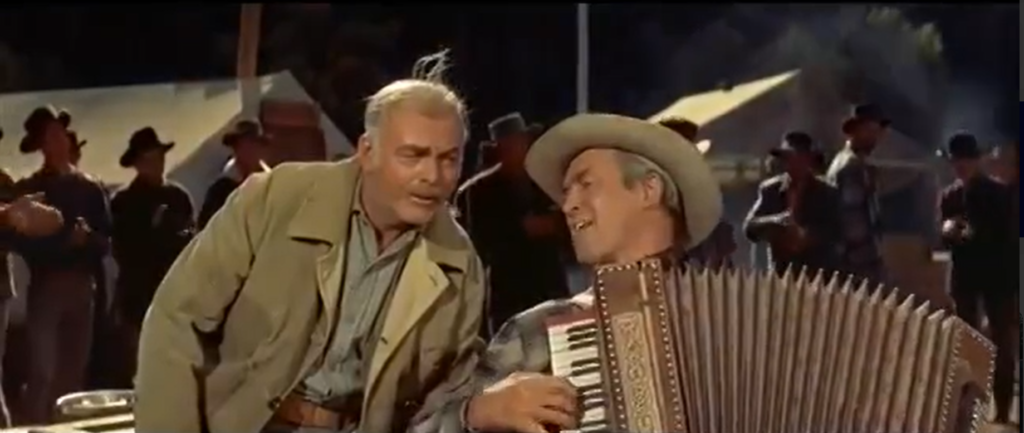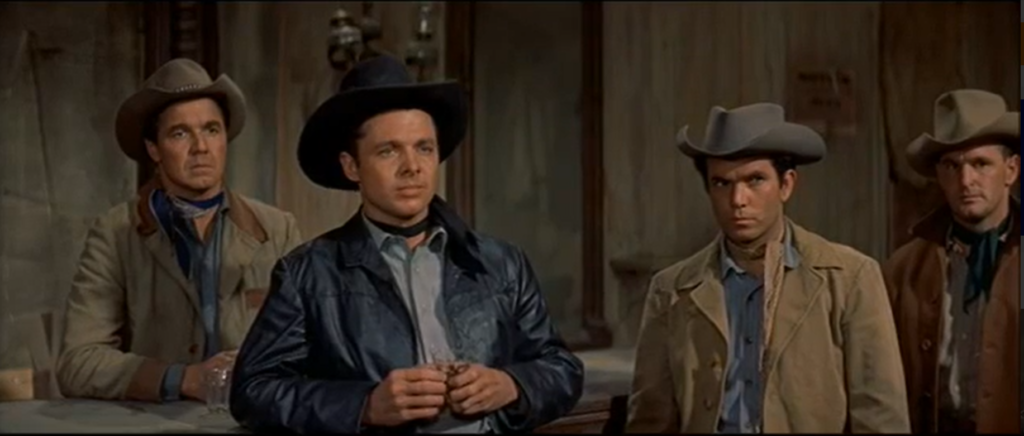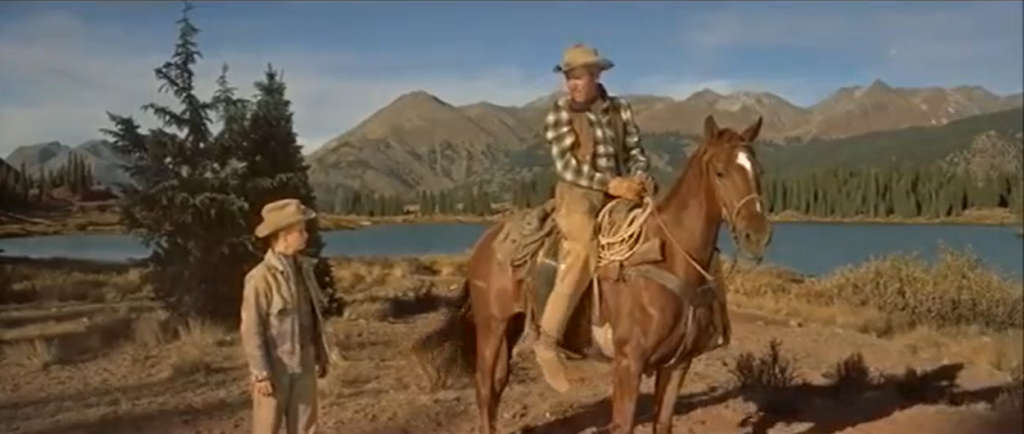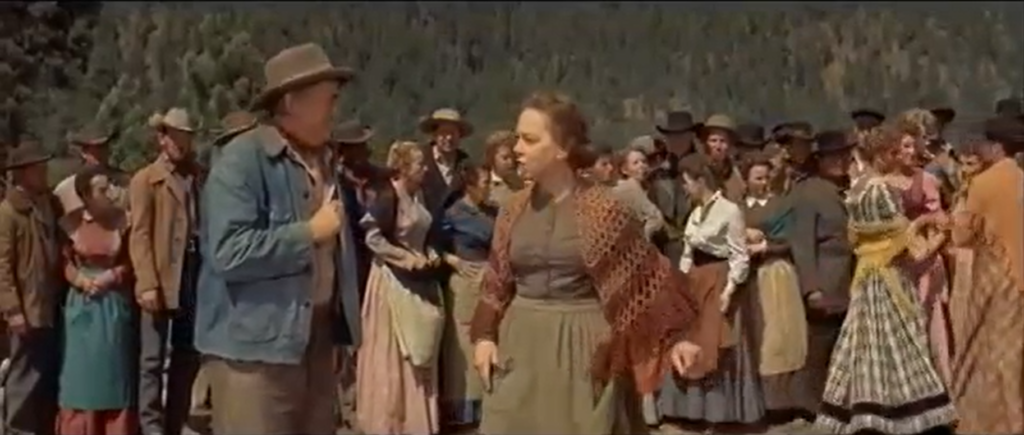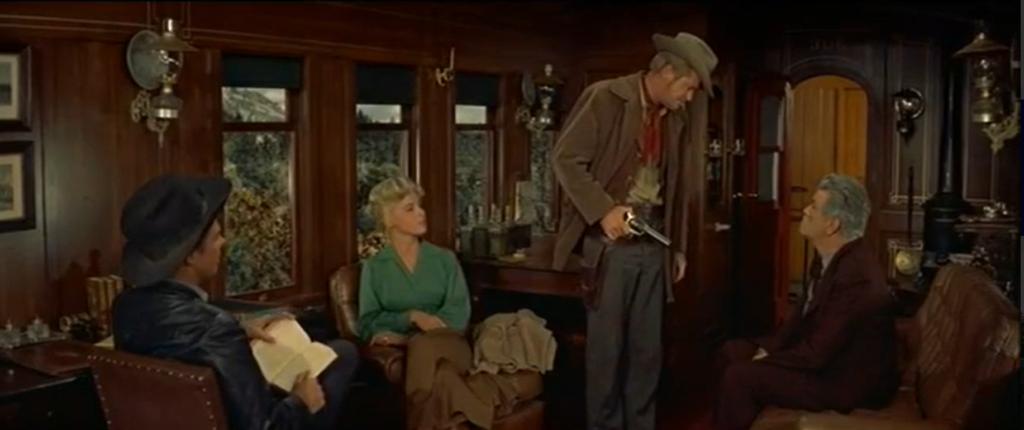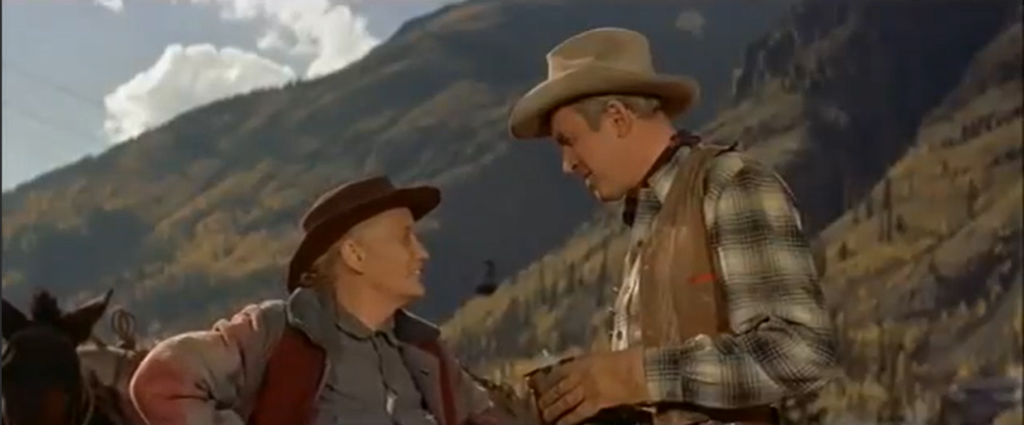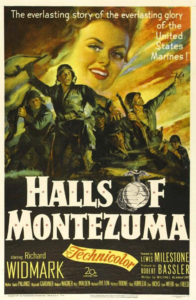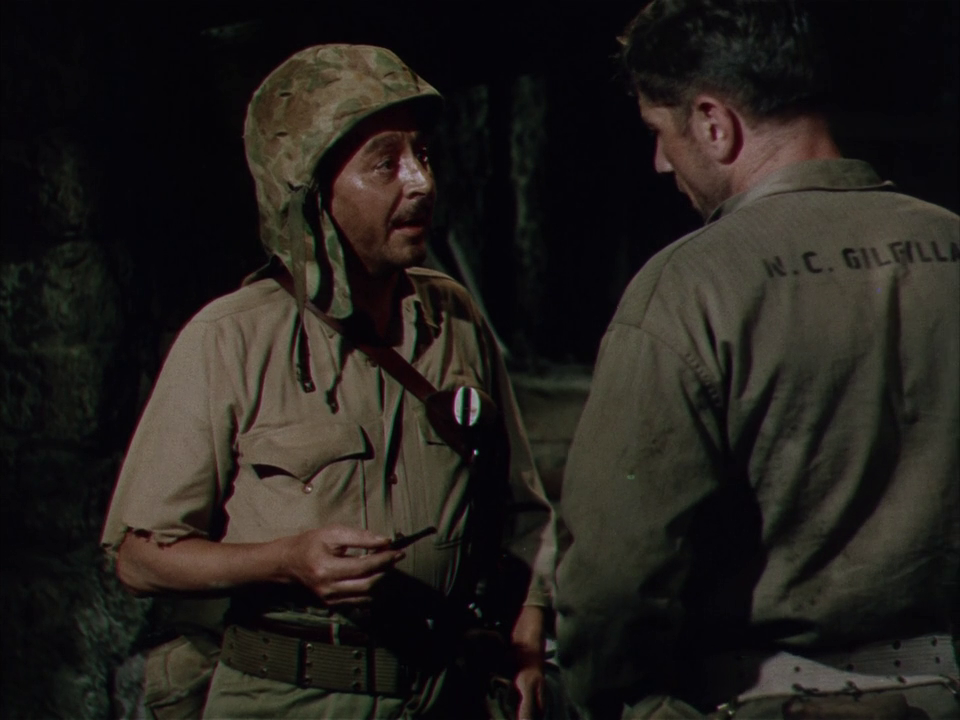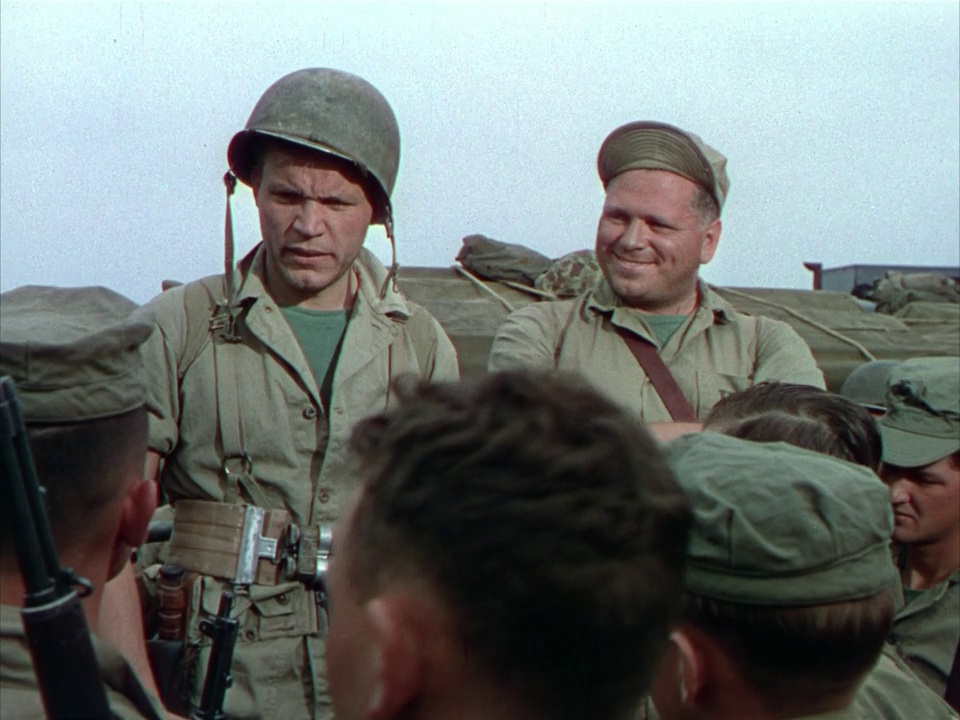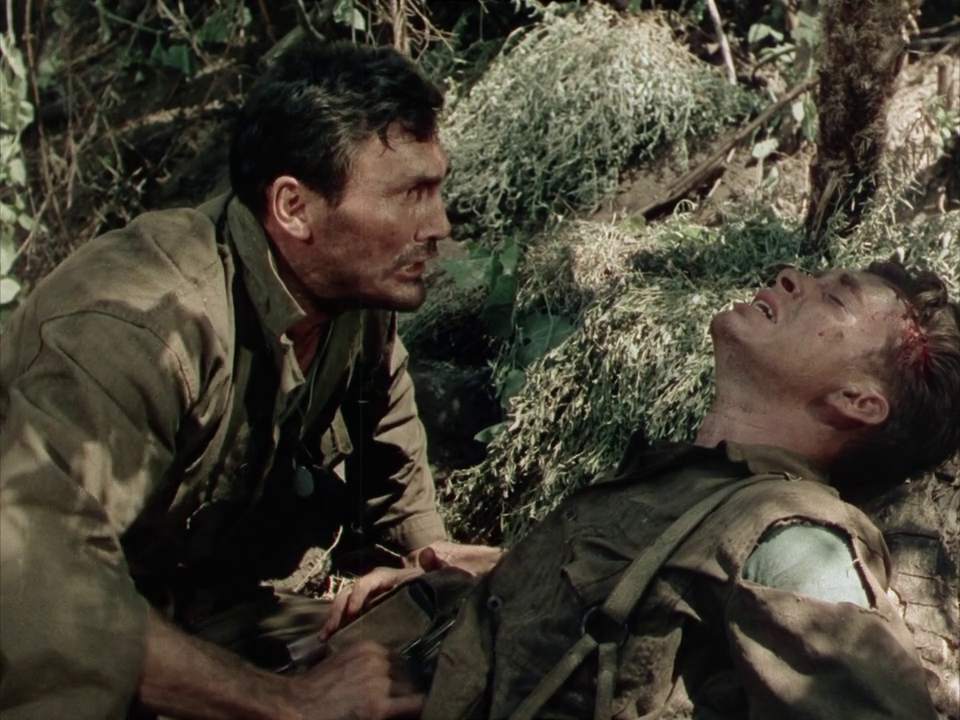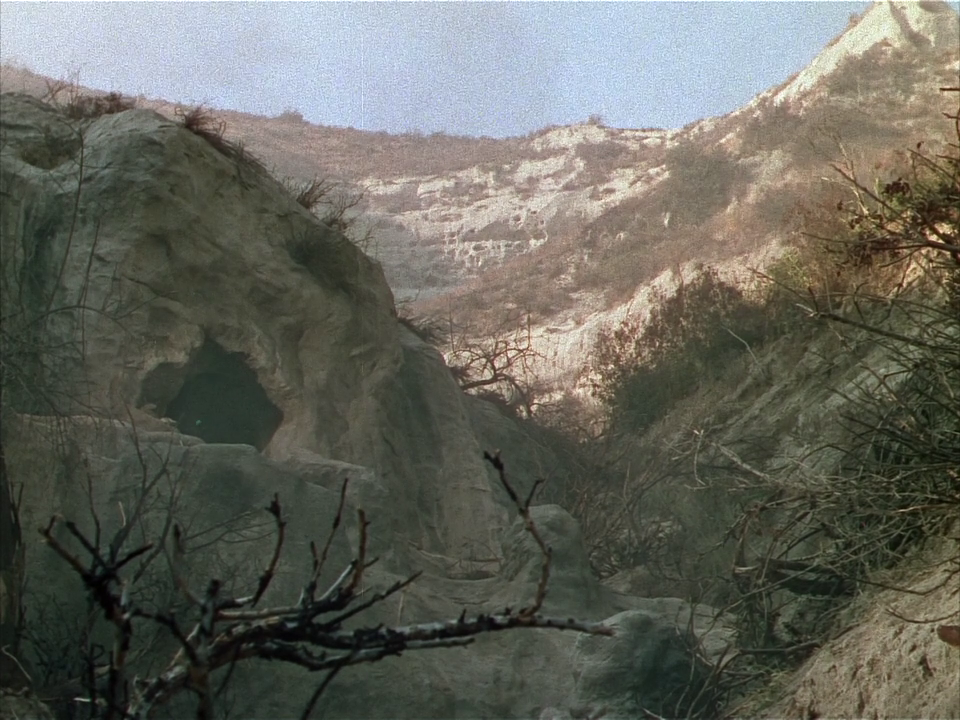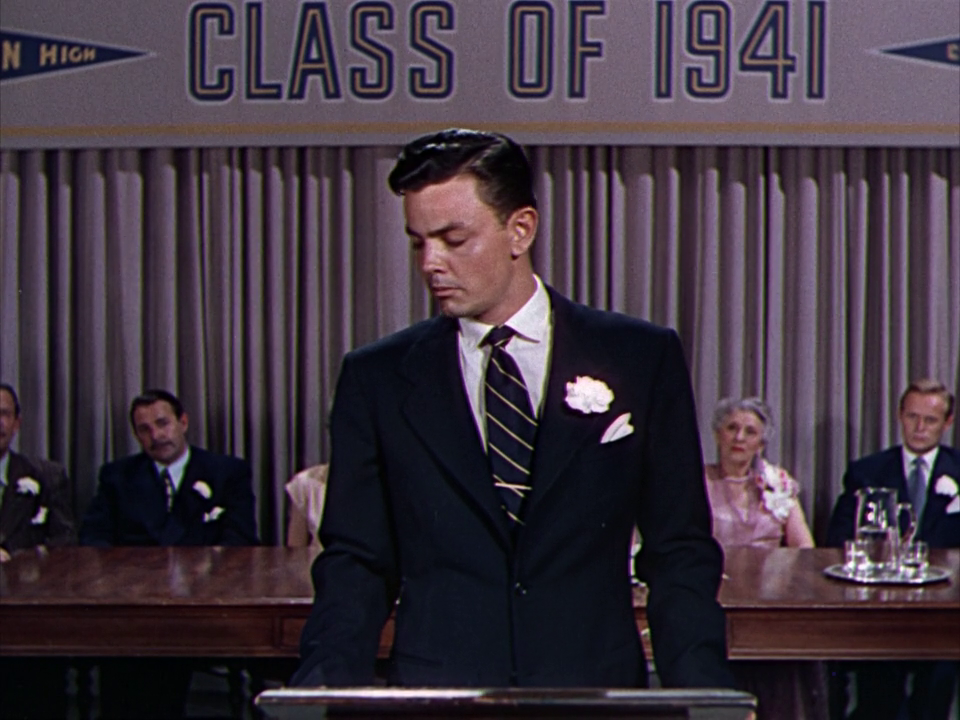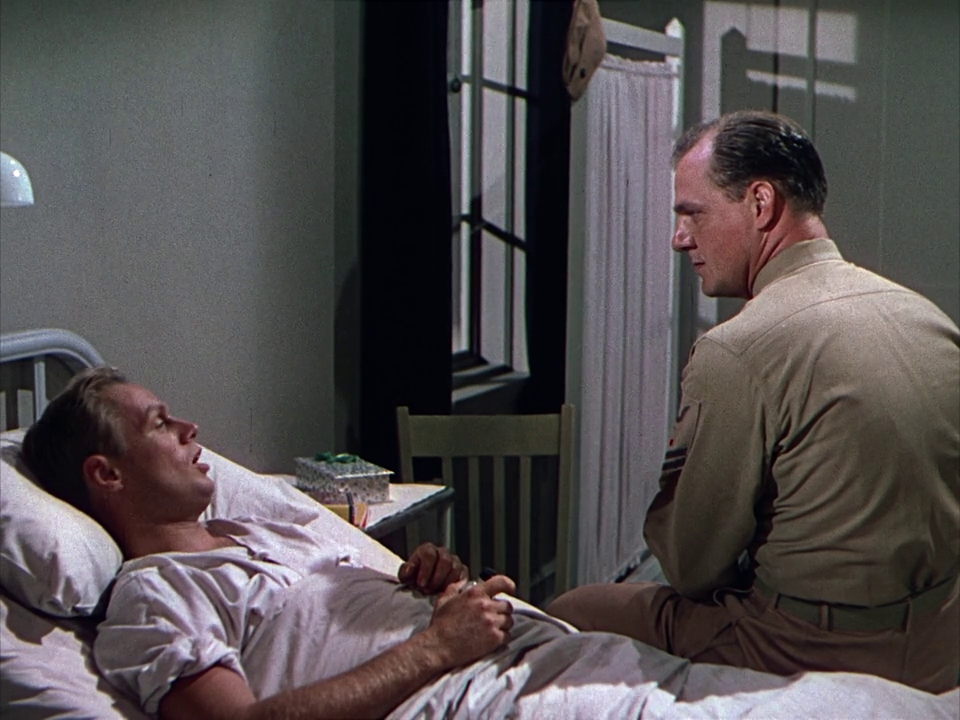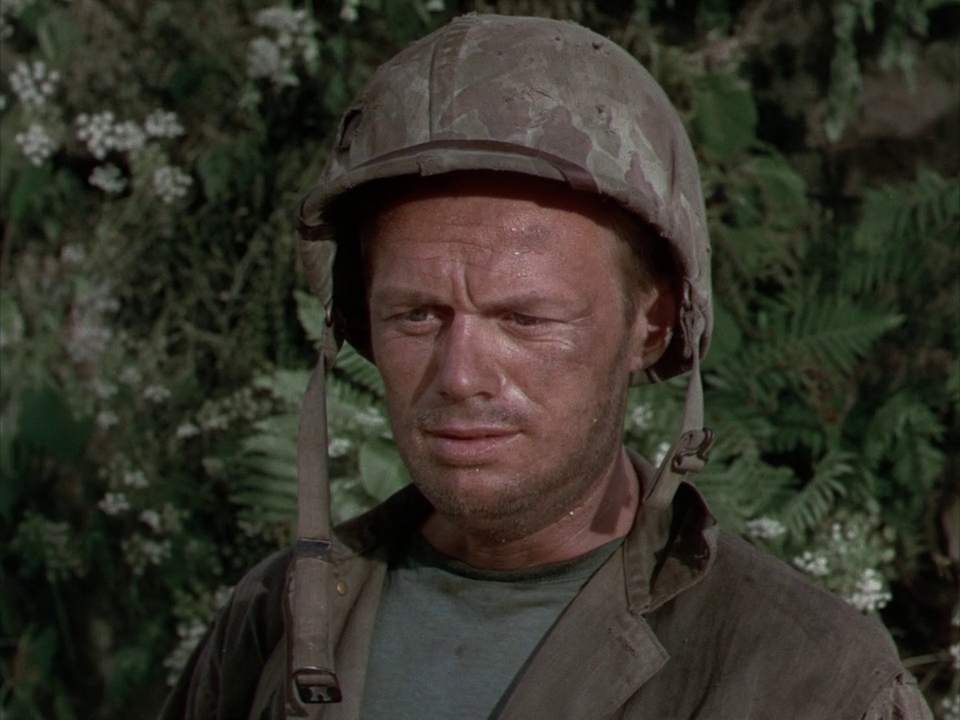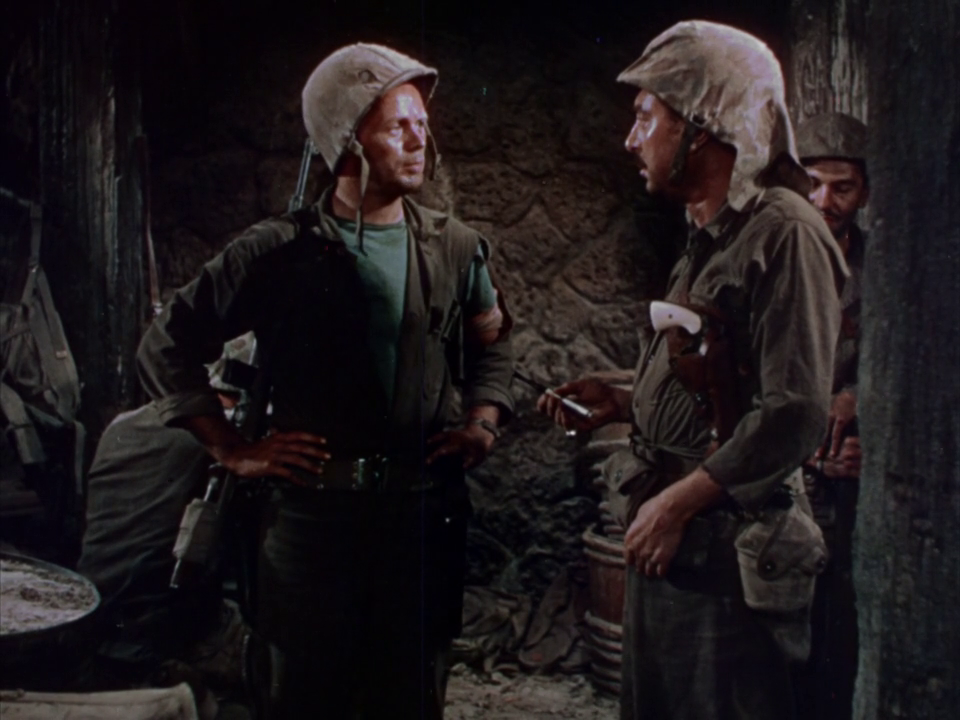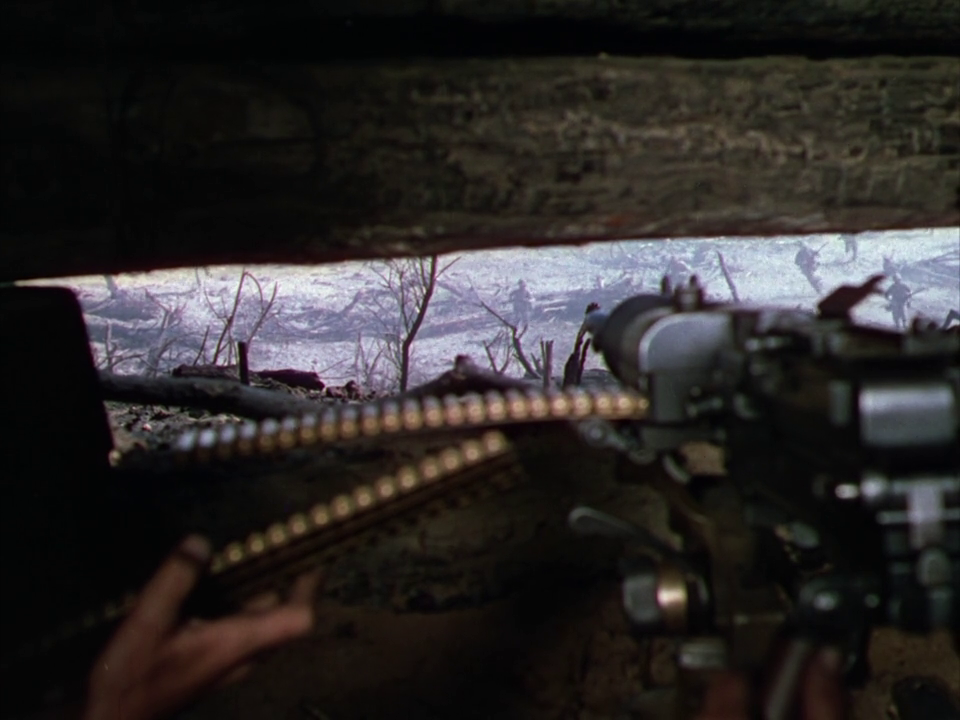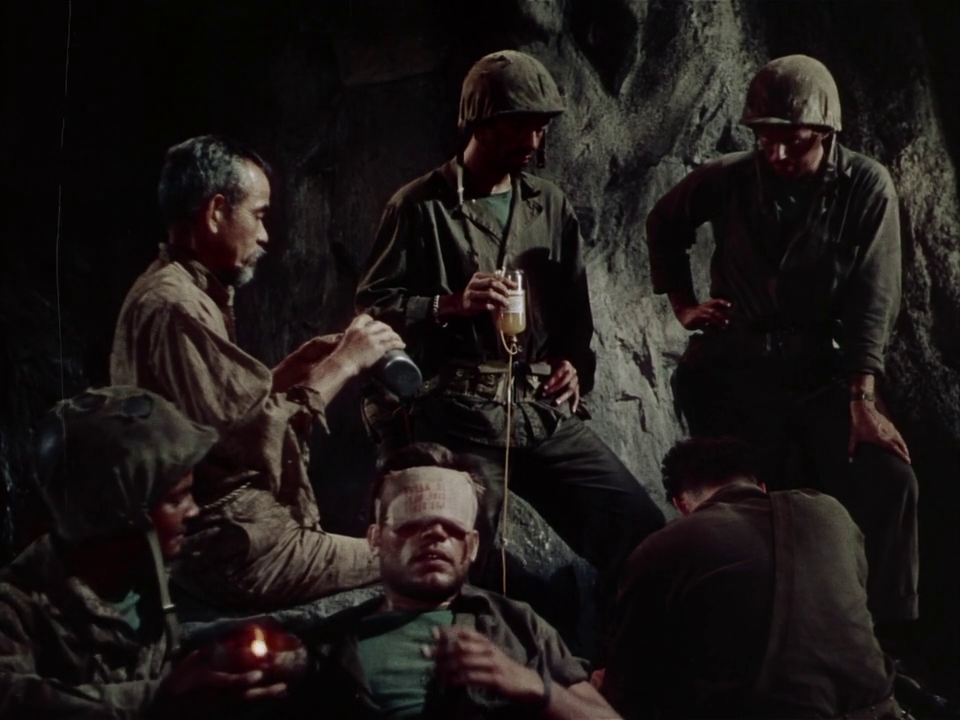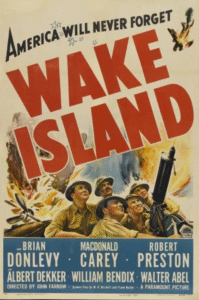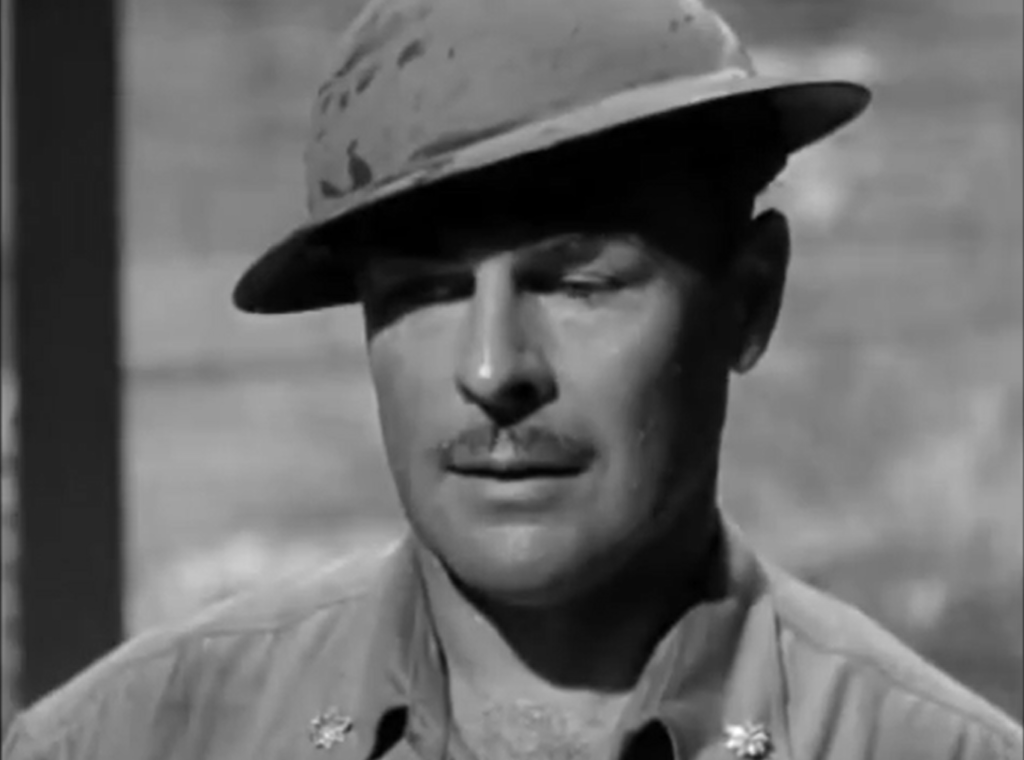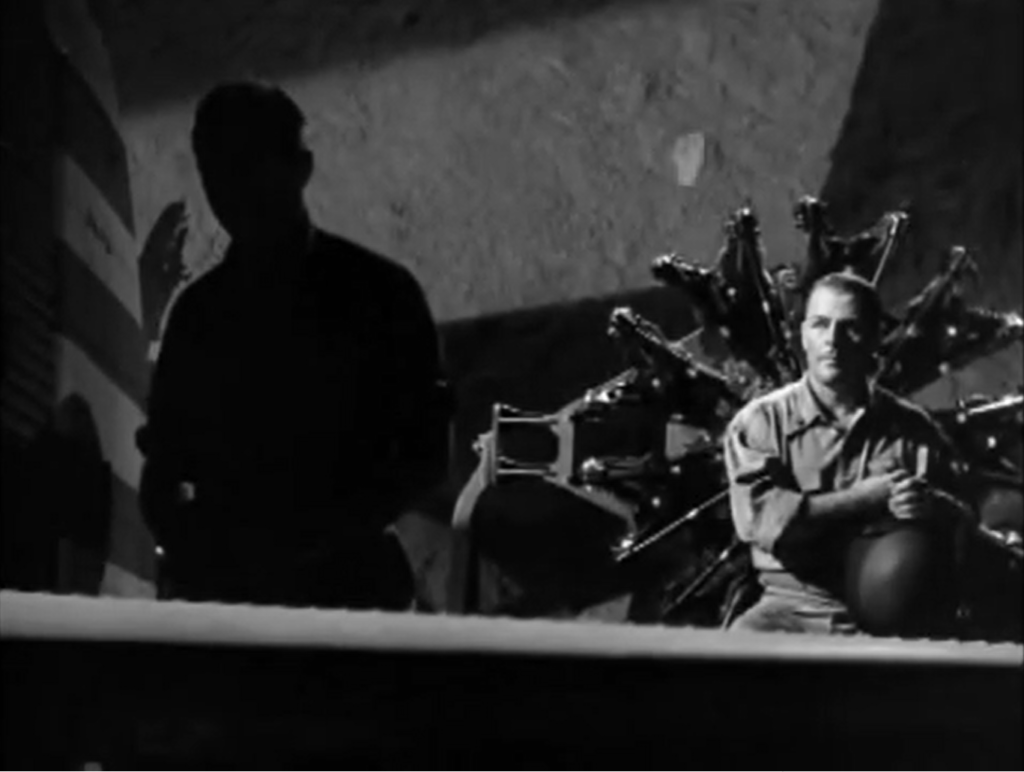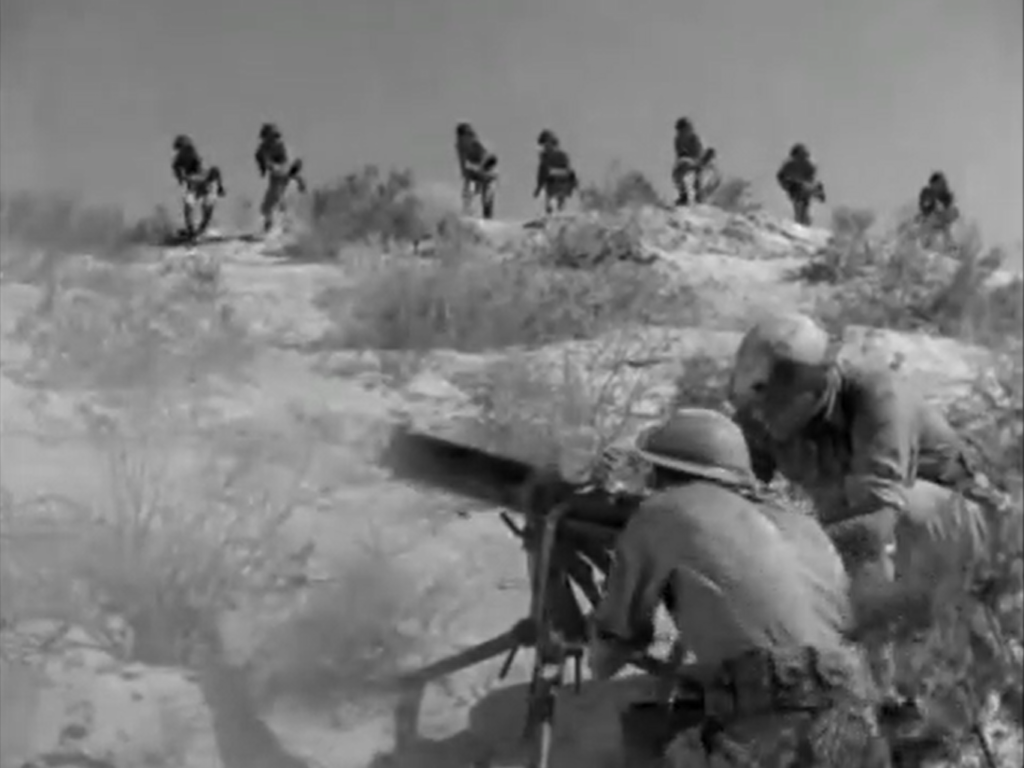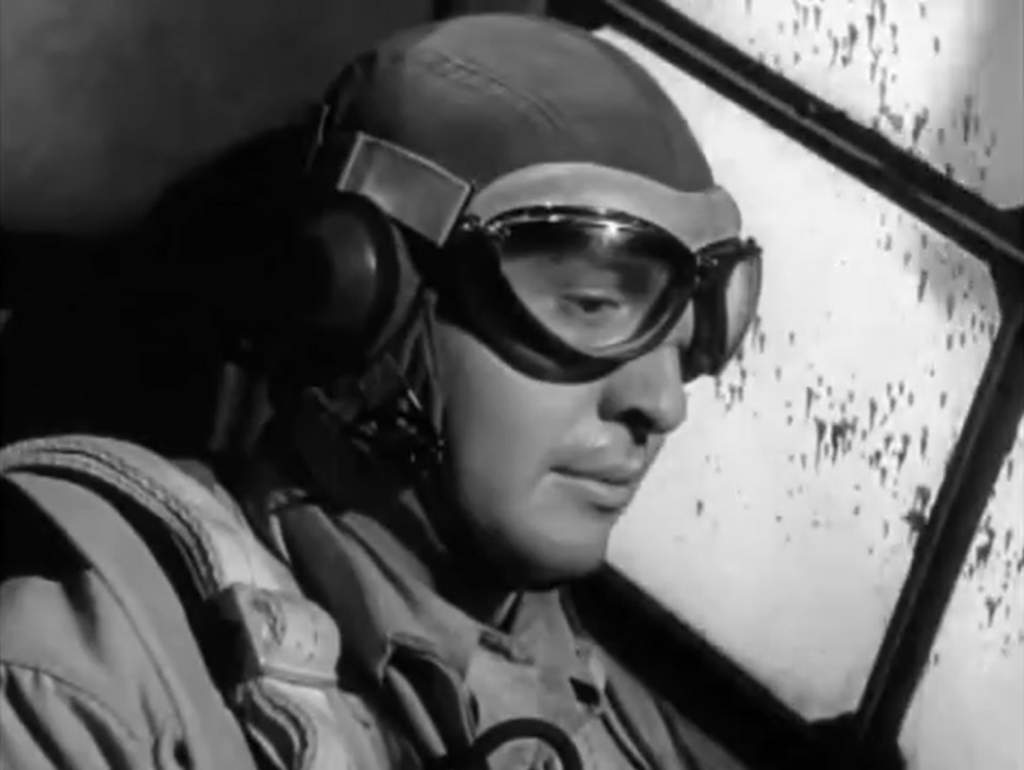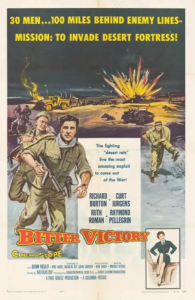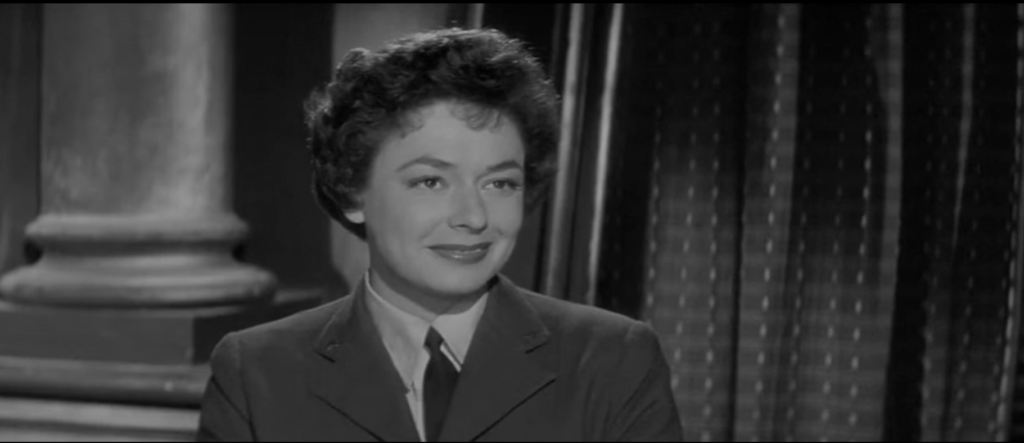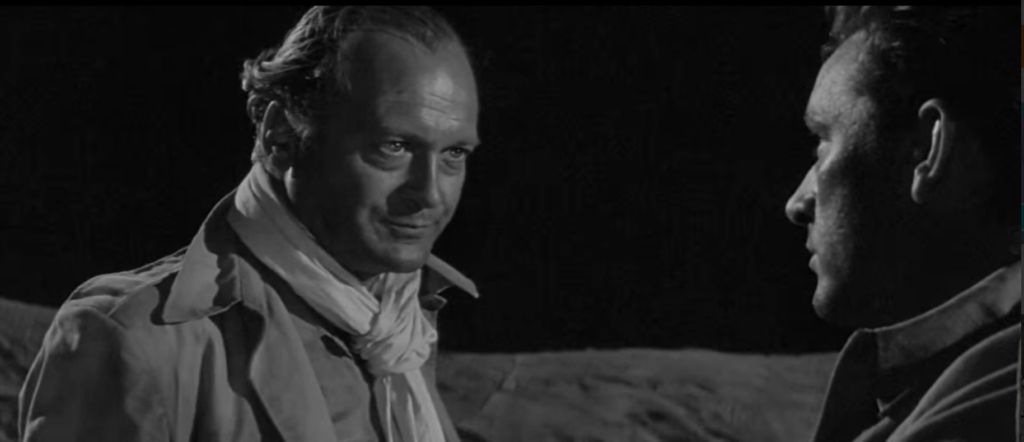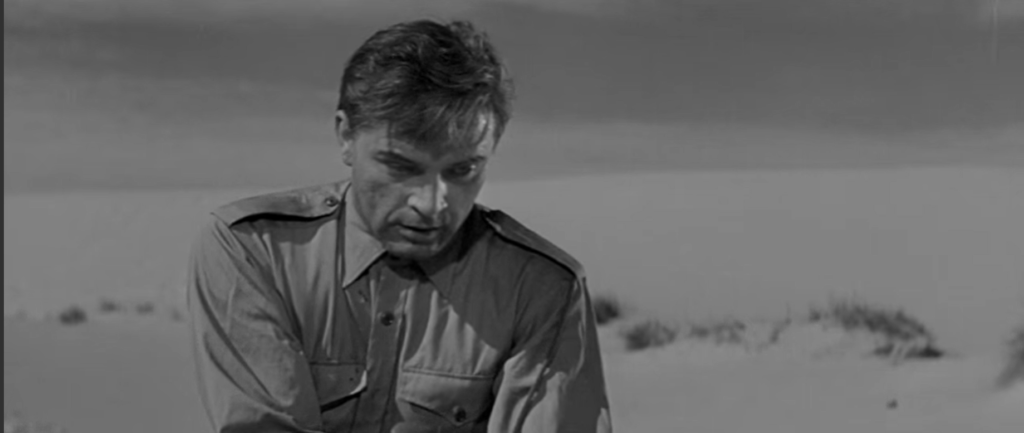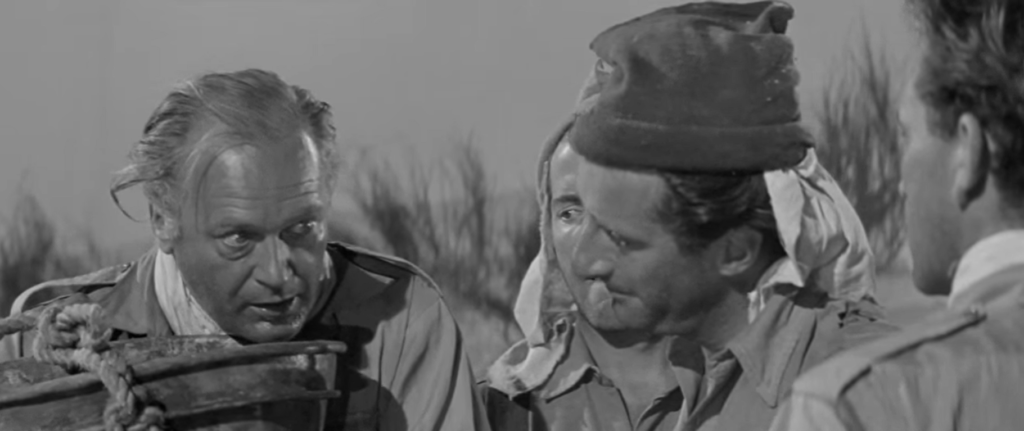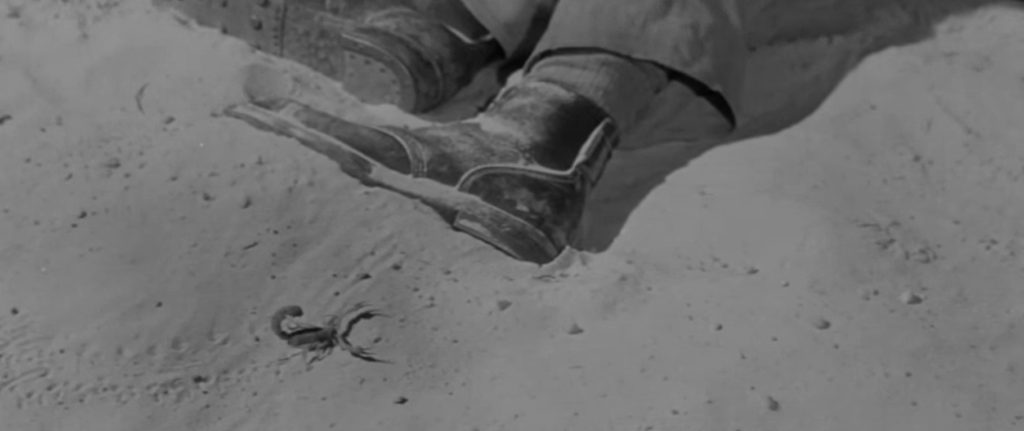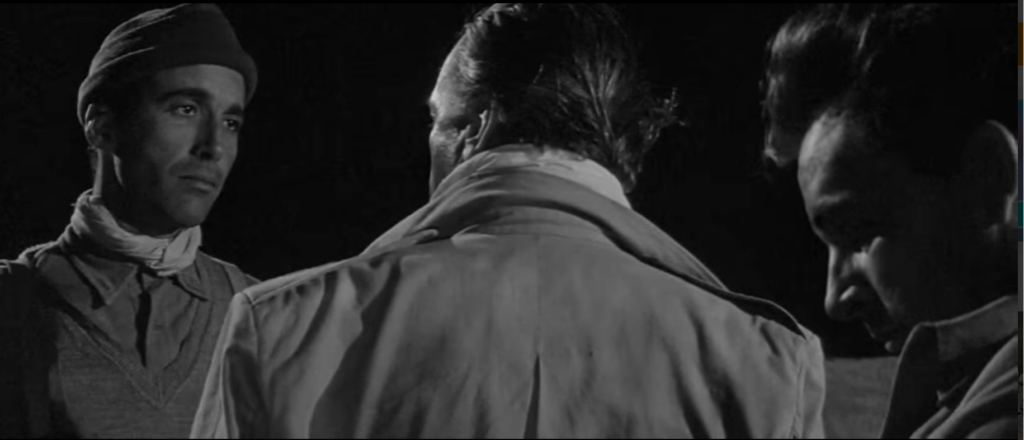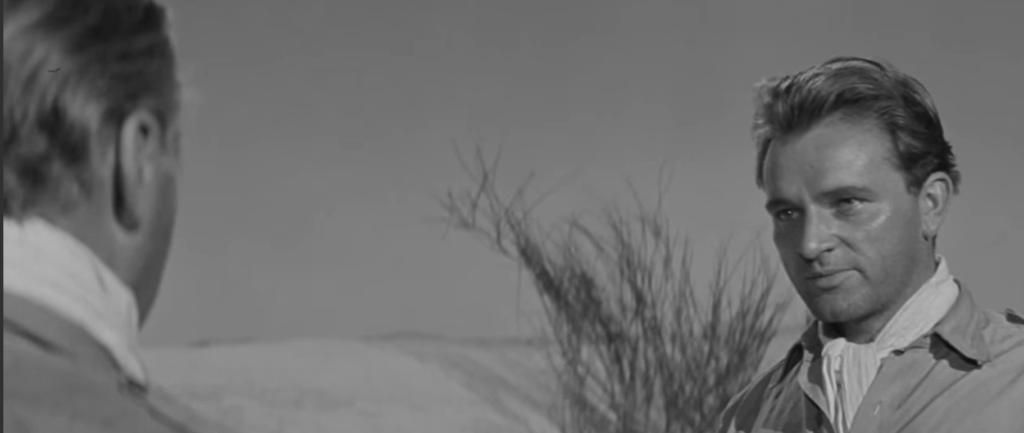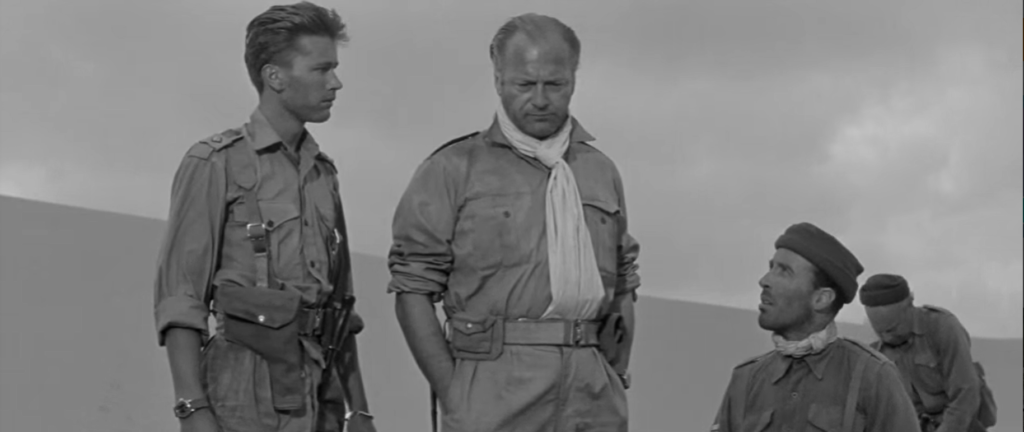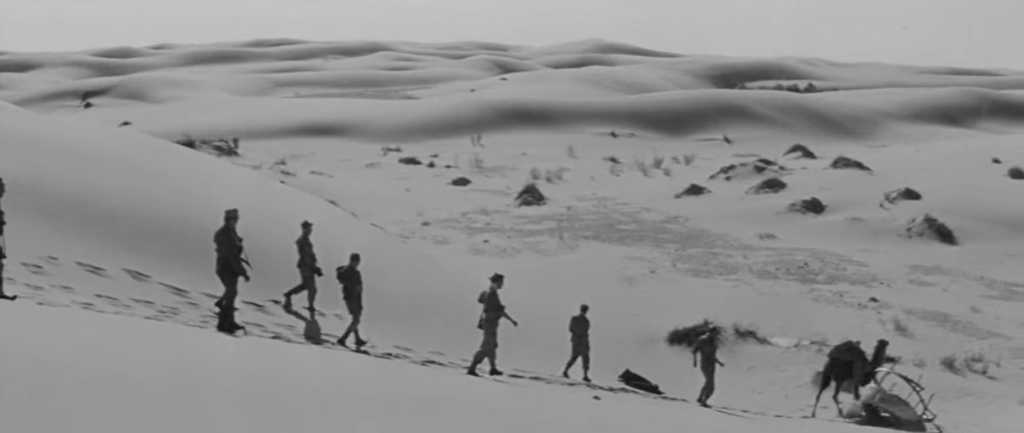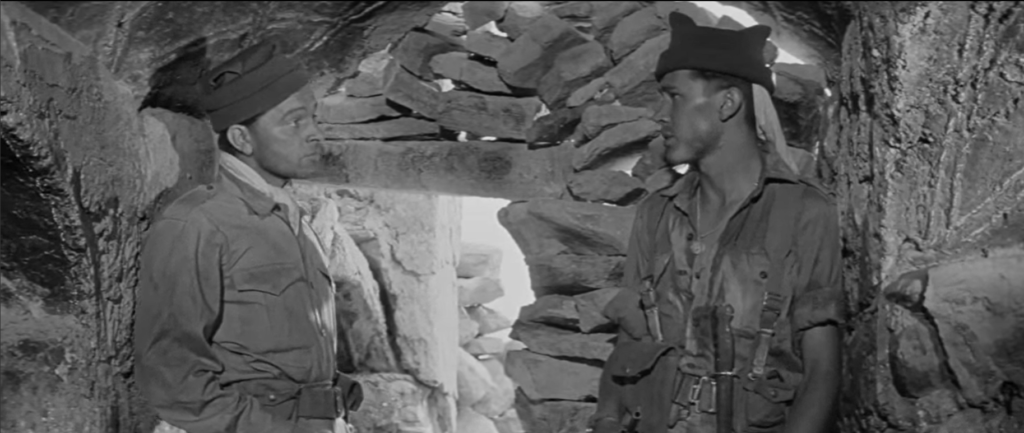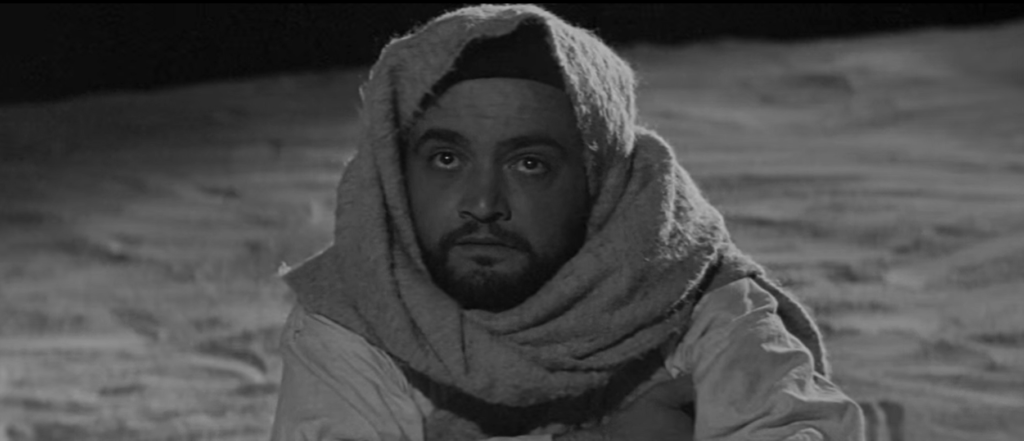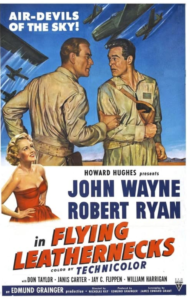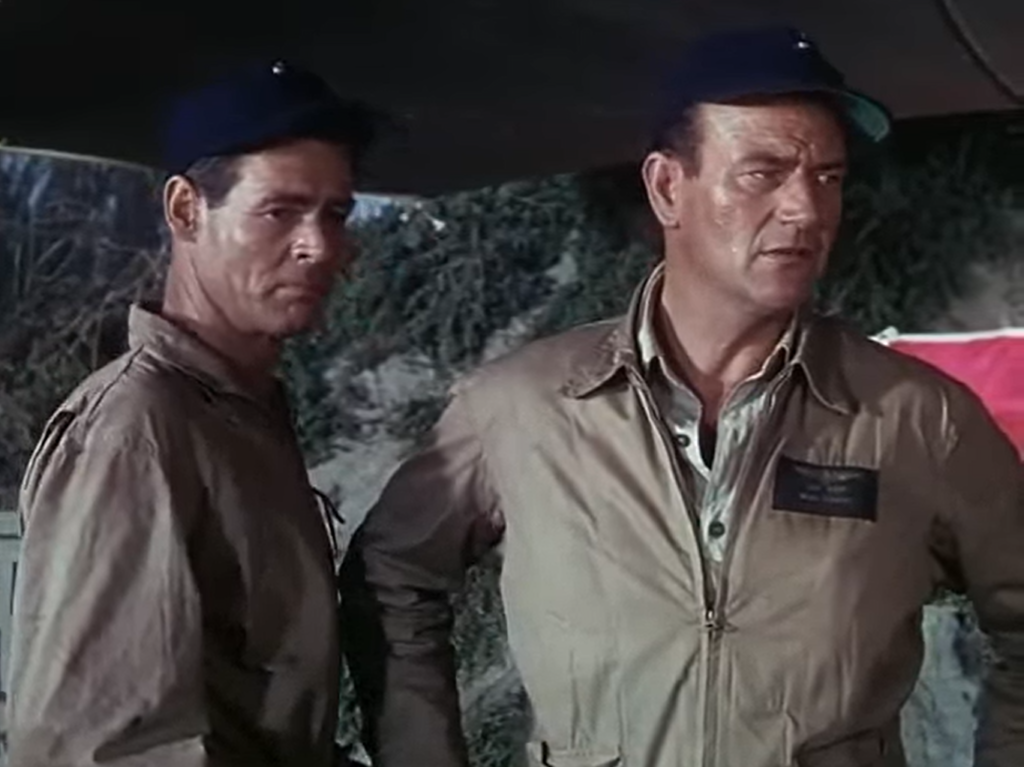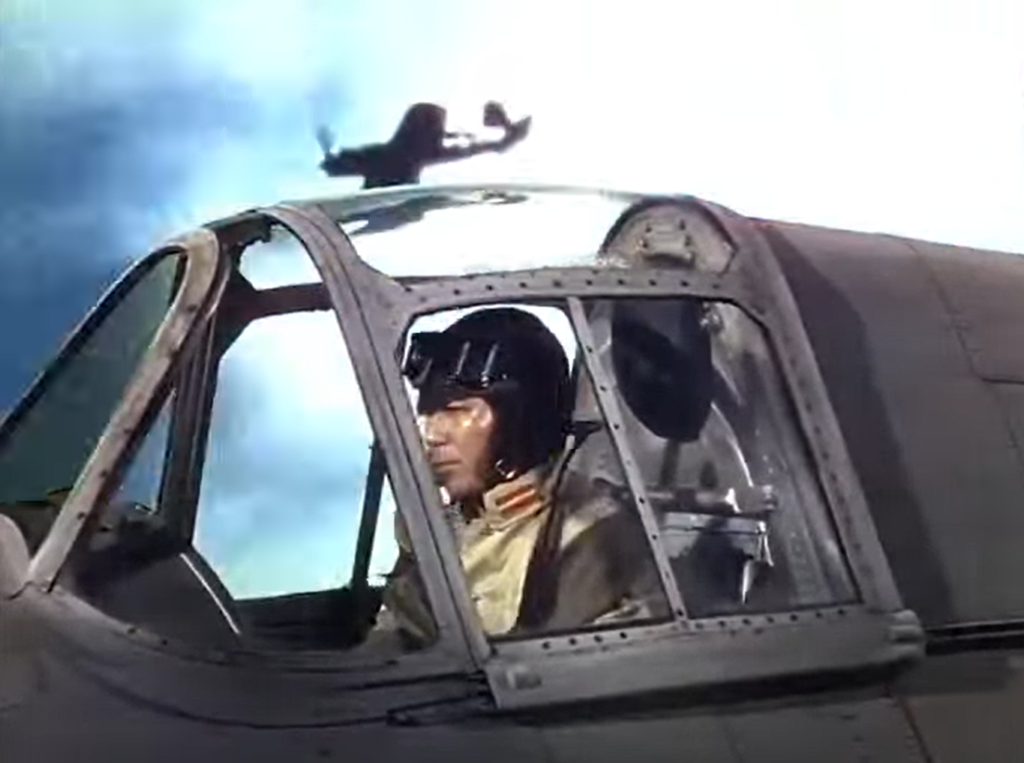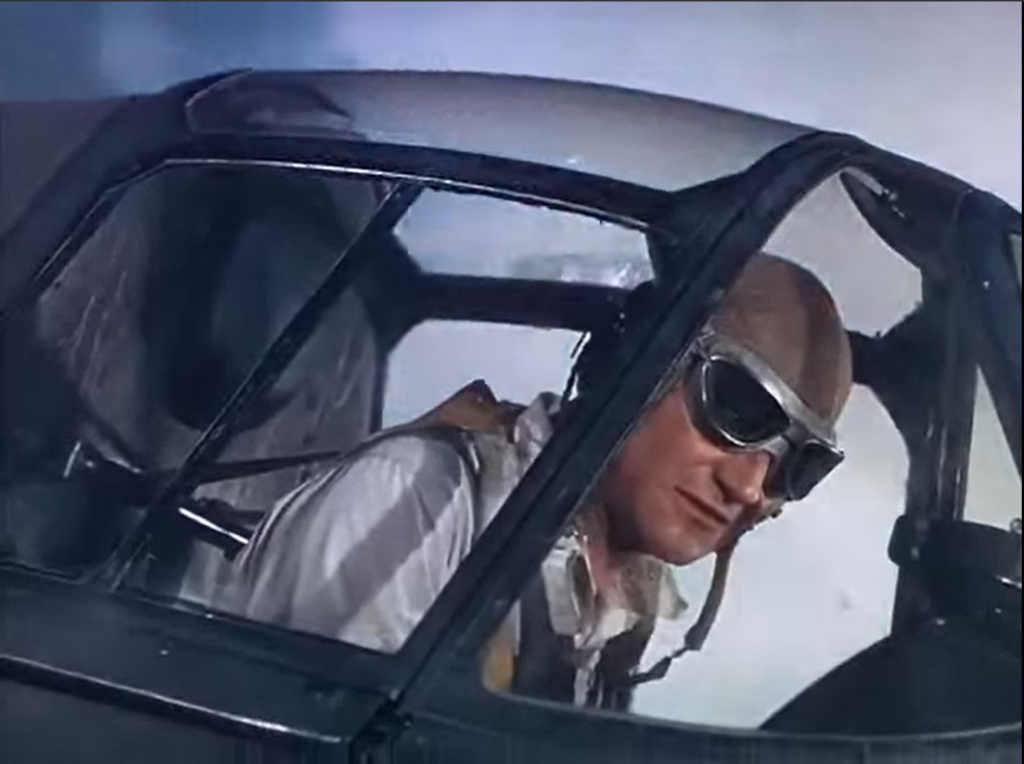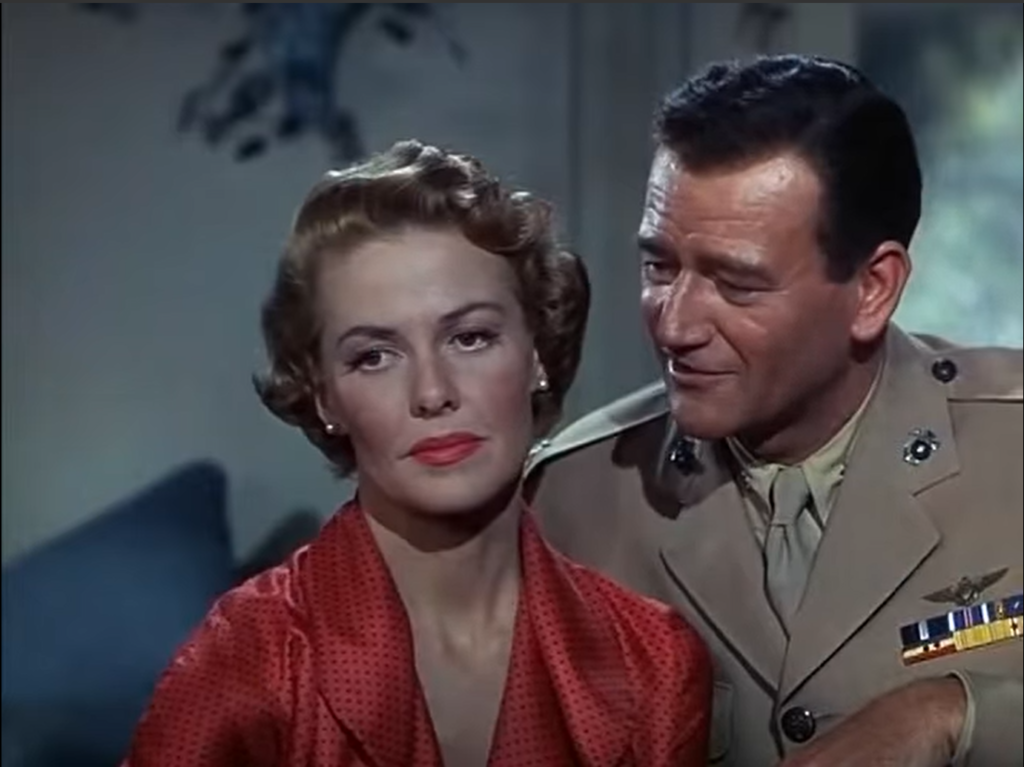|
Genres, Themes, Actors, and Directors:
- Coming of Age
- Flashback Films
- George Stevens Films
- Irene Dunne Films
- Strong Females
- Writers
Review:
George Stevens directed this lovely, lyrical adaptation of John Van Druten’s 1944 stage play, based on Kathryn Forbes’ fictionalized memoir Mama’s Bank Account (1943). Dunne apparently worked with a coach for two months to perfect her accent, and it pays off handsomely: as a Norwegian-American who grew up with first-generation immigrant parents, I can attest to the authenticity of her speech. Indeed, Dunne’s Oscar-nominated performance as Martha Hanson is among her best: in each scene, we see how much care she’s put into thinking through this tenacious woman’s decisions:
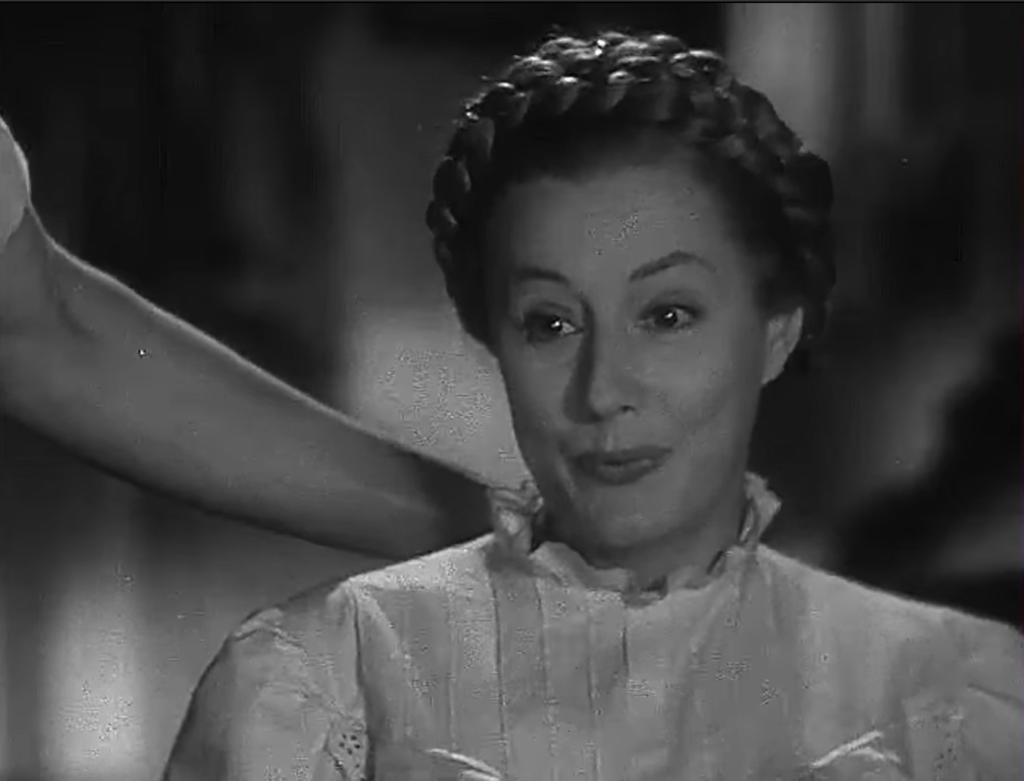
… showing us how calculating (literally) Martha is, in the best sense of the word — from the opening scene in which she carefully determines how much money their family has left to spend after accounting for all expenses:
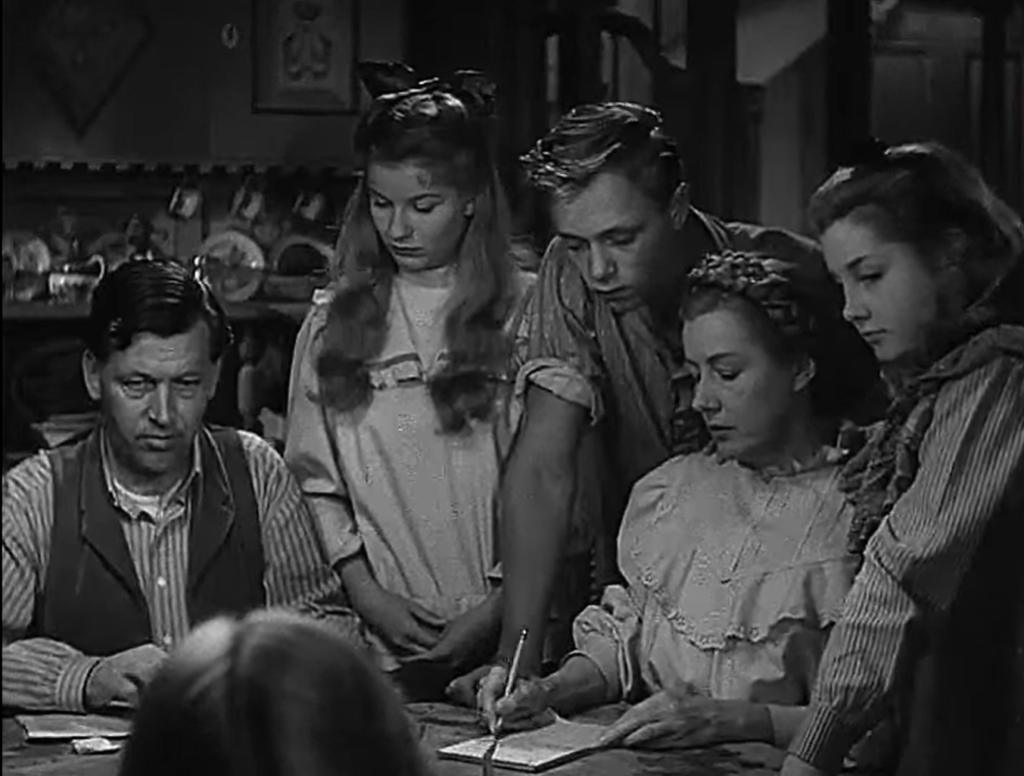
… to a sequence in which she figures out how to protect her bullied sister (Ellen Corby) — hoping to marry the town mortician (Edgar Bergen) — from merciless teasing by their mean older sisters (Hope Landin and Edith Evanson):
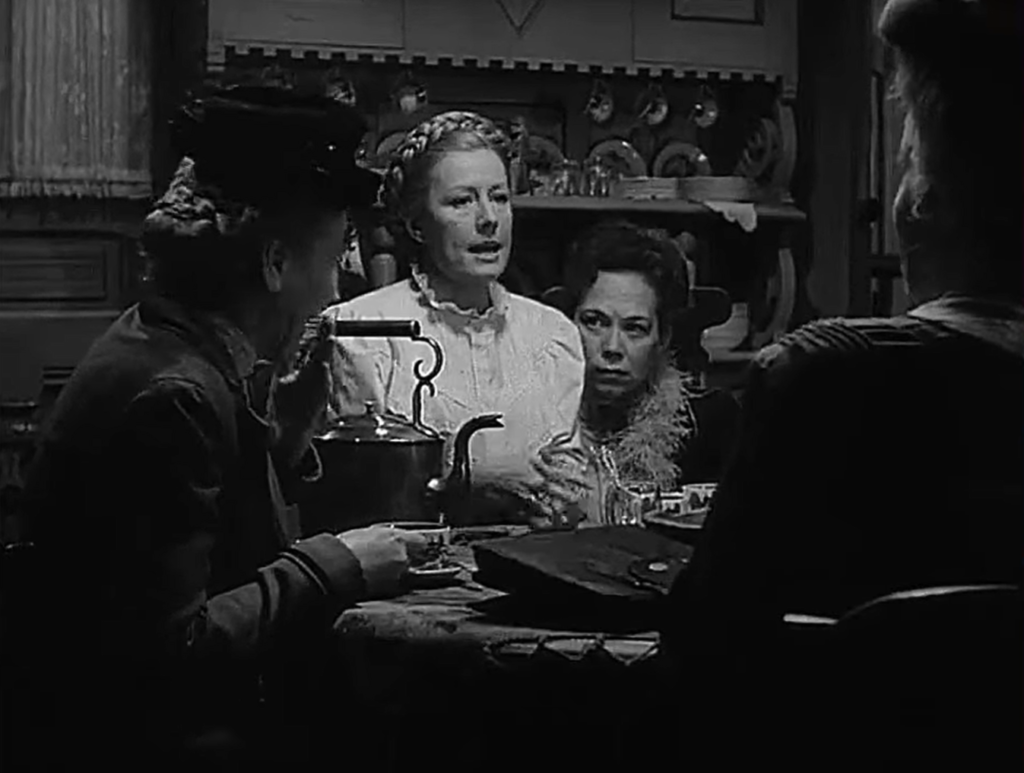
… to her ruse for sneaking into the hospital to visit her child:
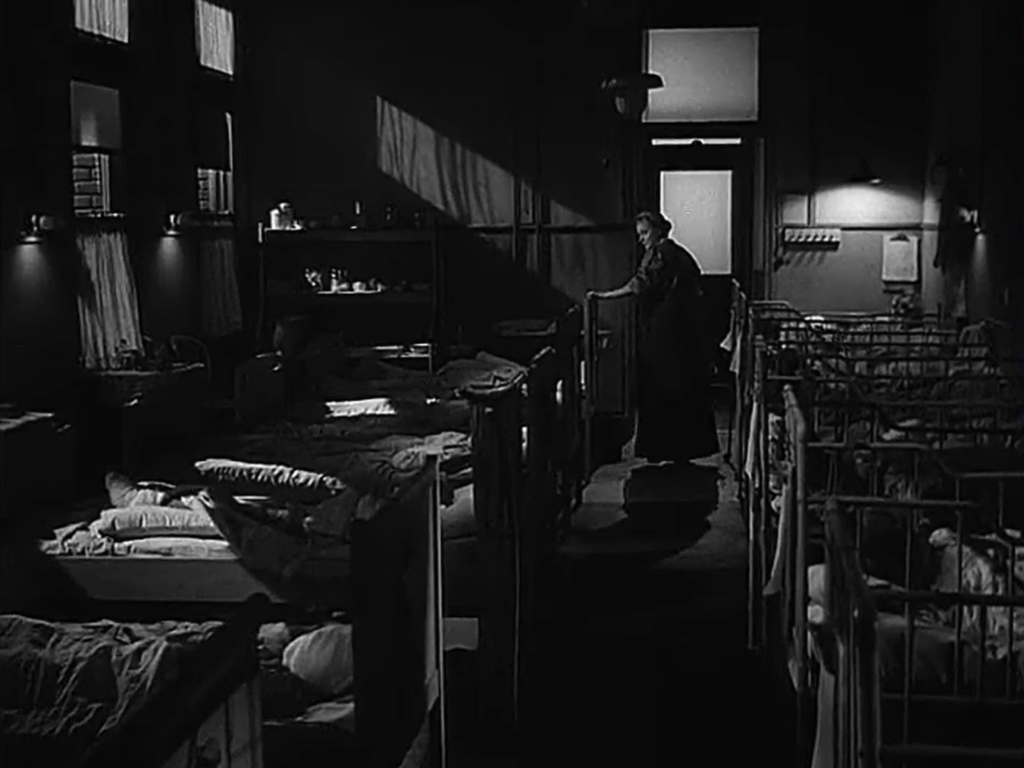
… and her ability to leverage her cooking expertise and people skills as she helps Bel Geddes gain support and advice from a renowned female author (Florence Bates):
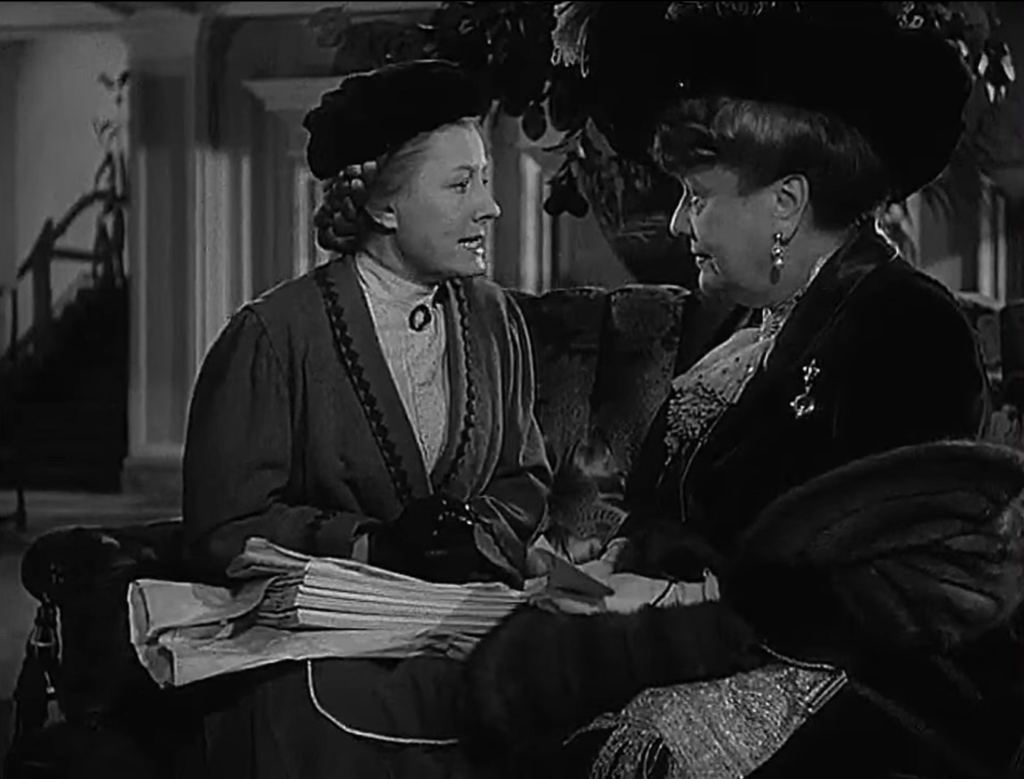
While the primary focus is (appropriately) on “Mama”, this long-ish film (it clocks in at over 2 hours) shows us a wide variety of memorable anecdotes and characters from Bel Geddes’ past — including a lodger (Cedric Hardwicke) who pays for his room and board through absorbing read-alouds:
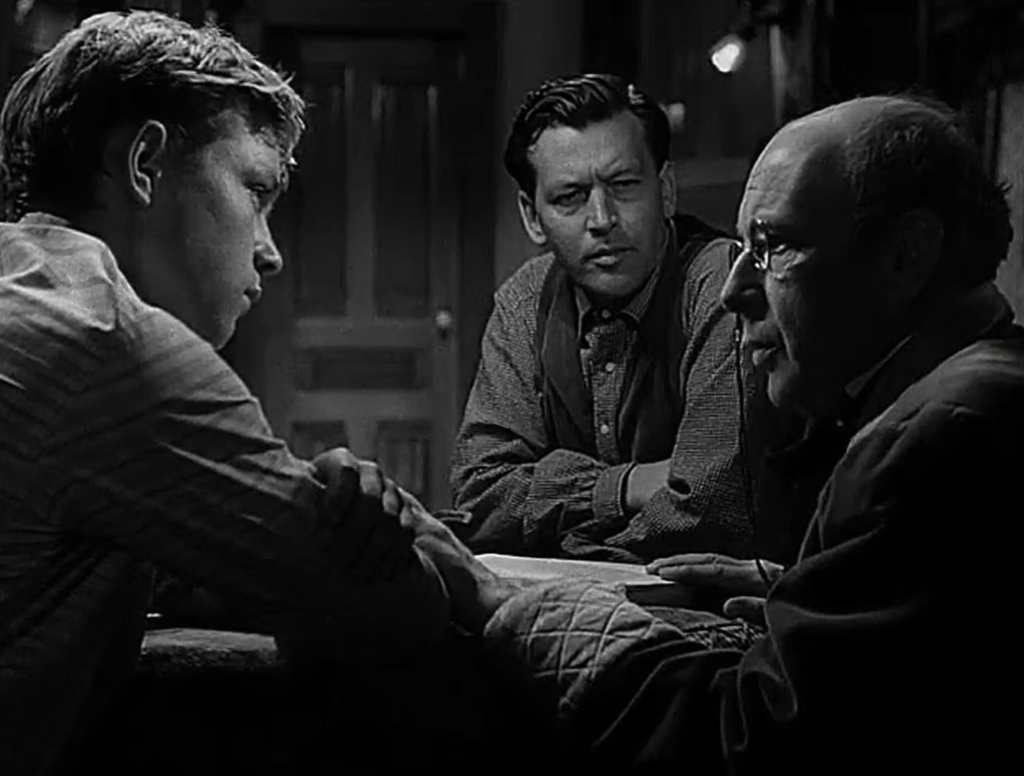
… her sister Dagmar’s (June Hedin’s) travails with a tom cat named “Uncle” Elizabeth:
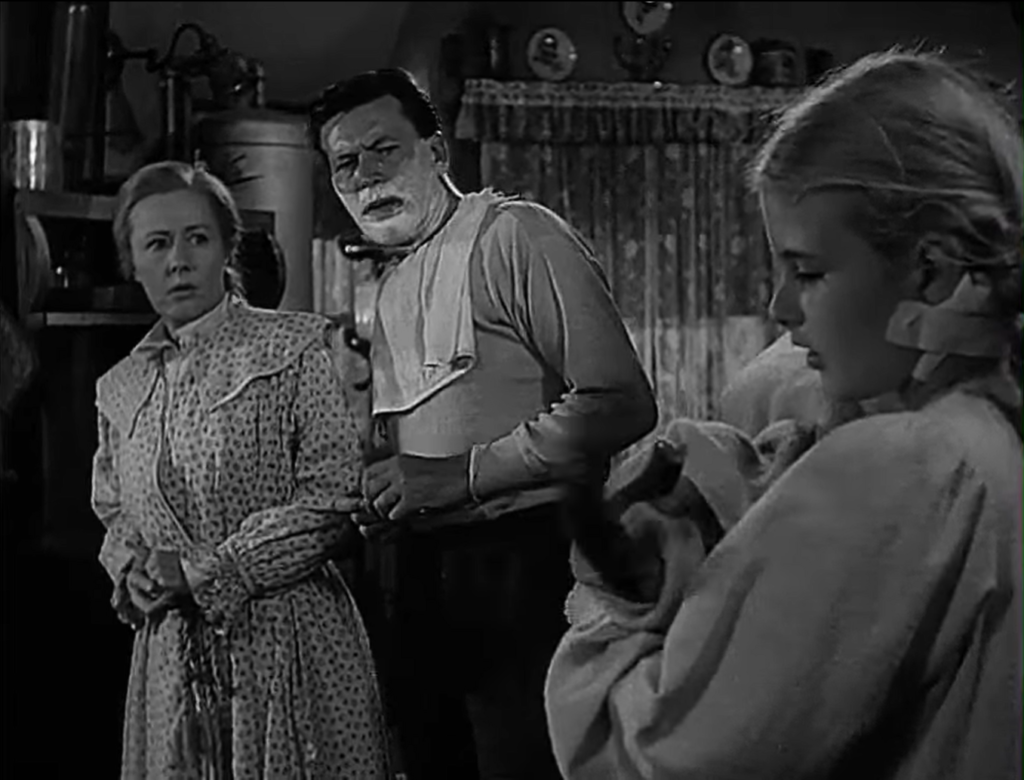
… and, most especially, her overbearing Uncle Chris (Oskar Homolka):
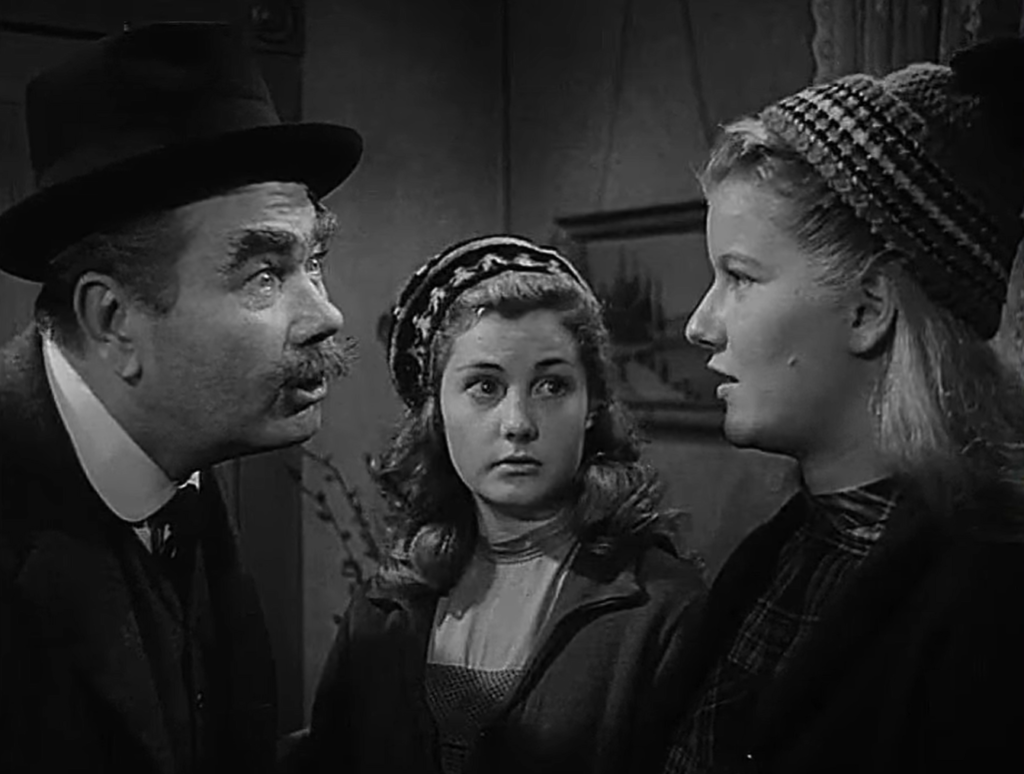
… whose household presence and failing health take up a bit too much screentime, though this is forgivable precisely because he had such an outsized influence in her memory. Nicholas Musuraca’s cinematography is stellar throughout, with especially impressive use made of location shooting to portray life in early 20th century San Francisco:
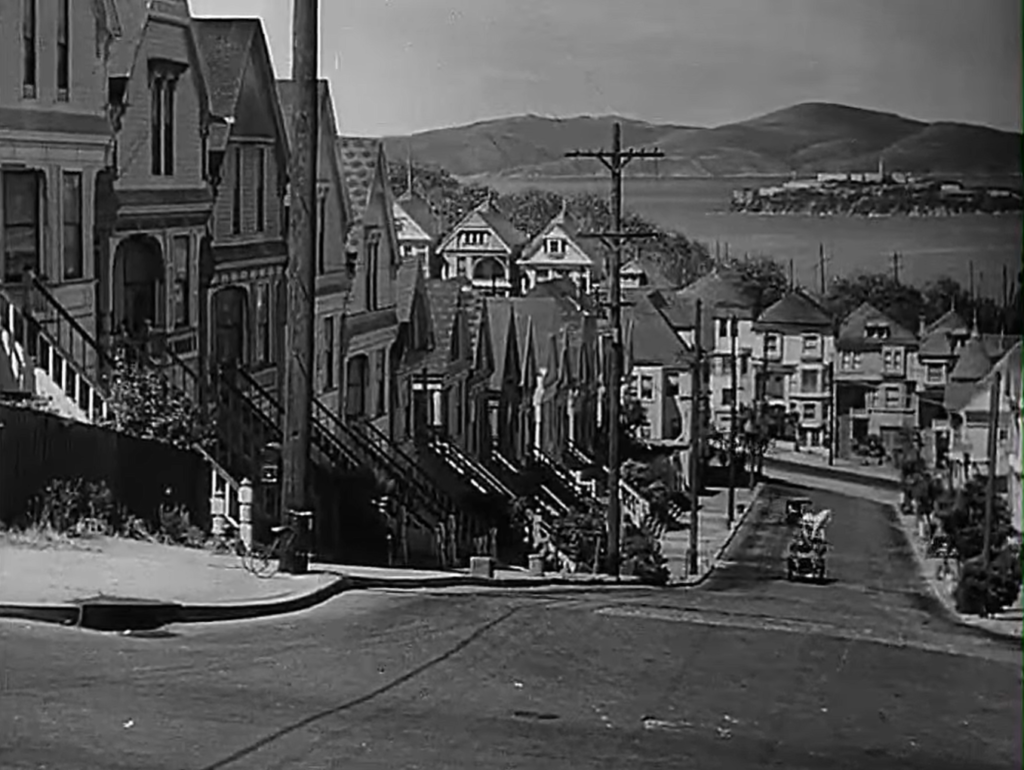
This films remains very much worth a visit, particularly for Dunne’s stand-out performance, but also simply as an overall “good show”.
Note: It was jarring for me to hear Homolka’s Austrian accent passed off as Norwegian, though I’m sure most audiences won’t mind.
Notable Performances, Qualities, and Moments:
- Irene Dunne as Mama
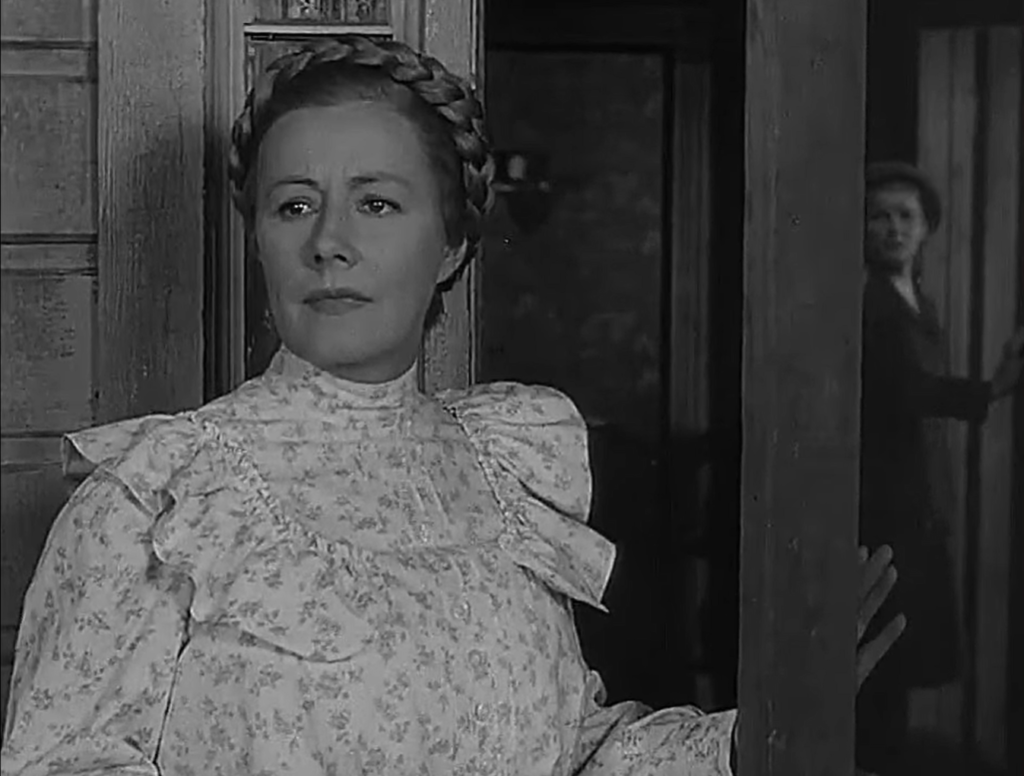
- Barbara Bel Geddes as Katrin
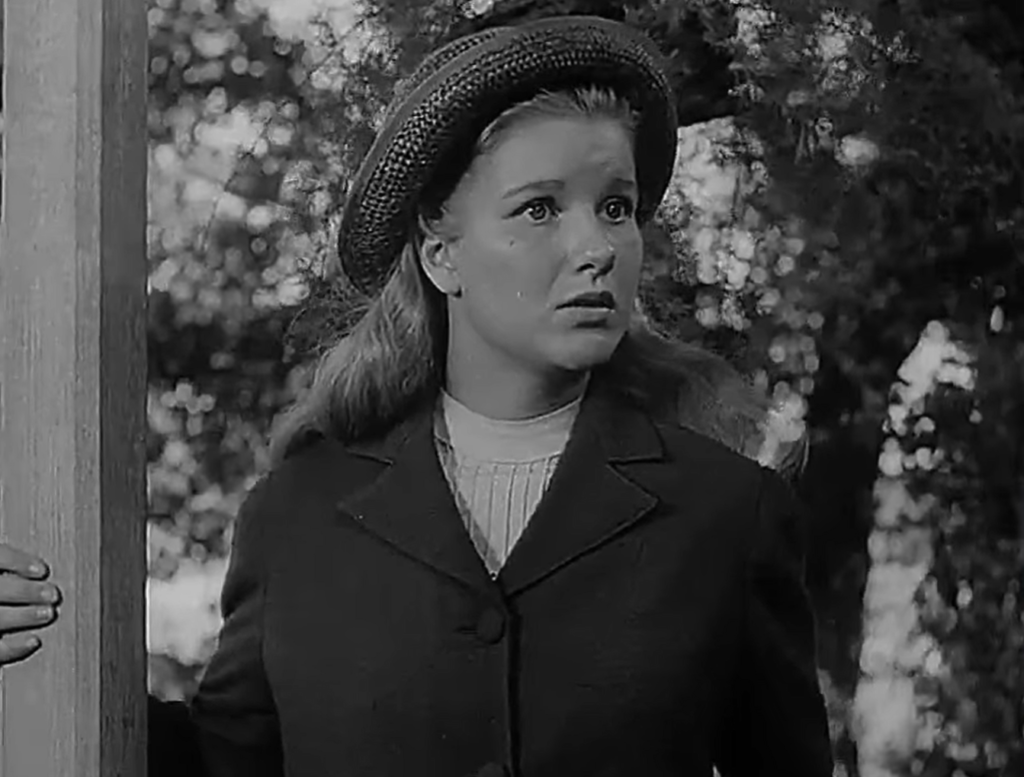
- Fine supporting performances
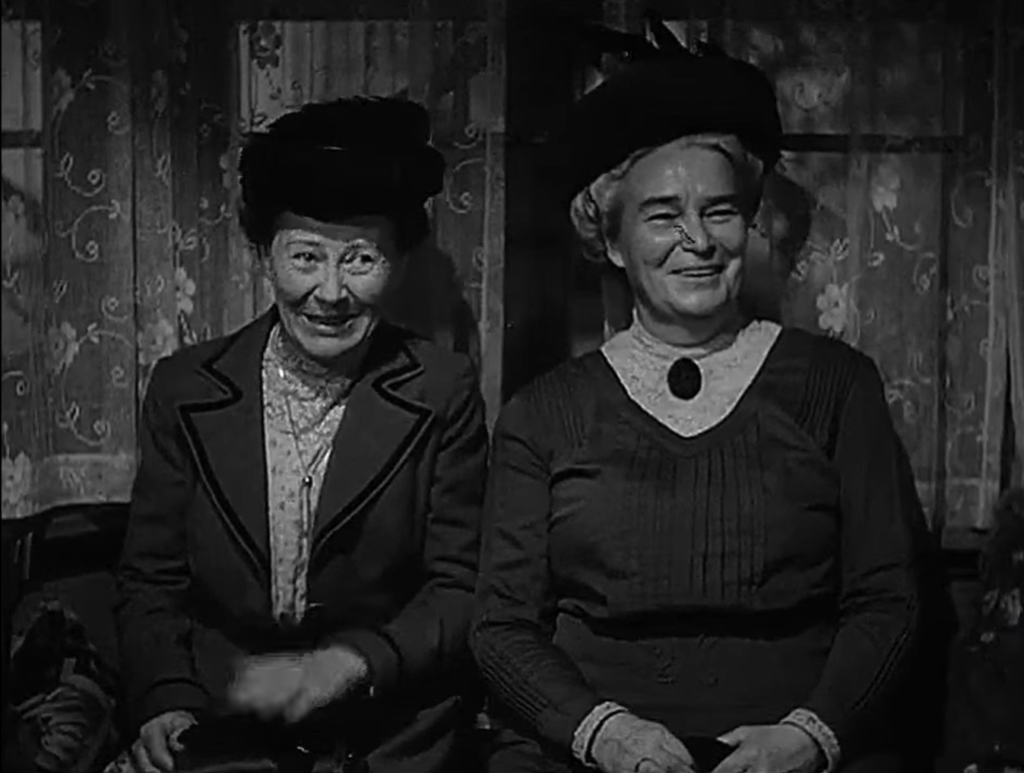
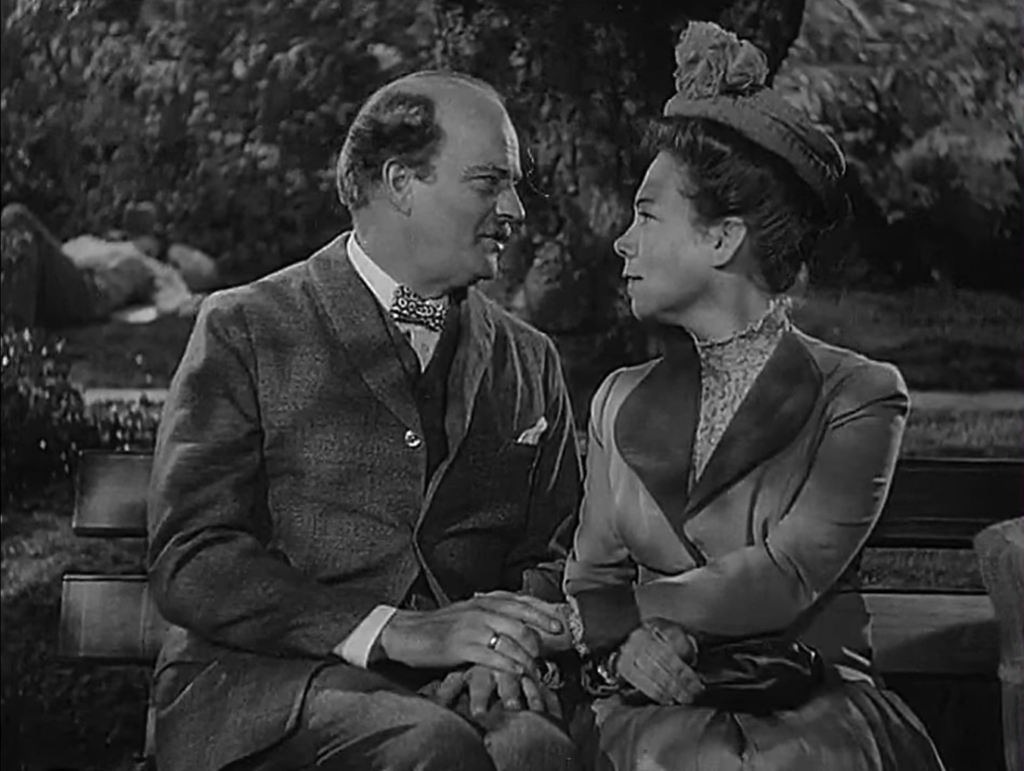 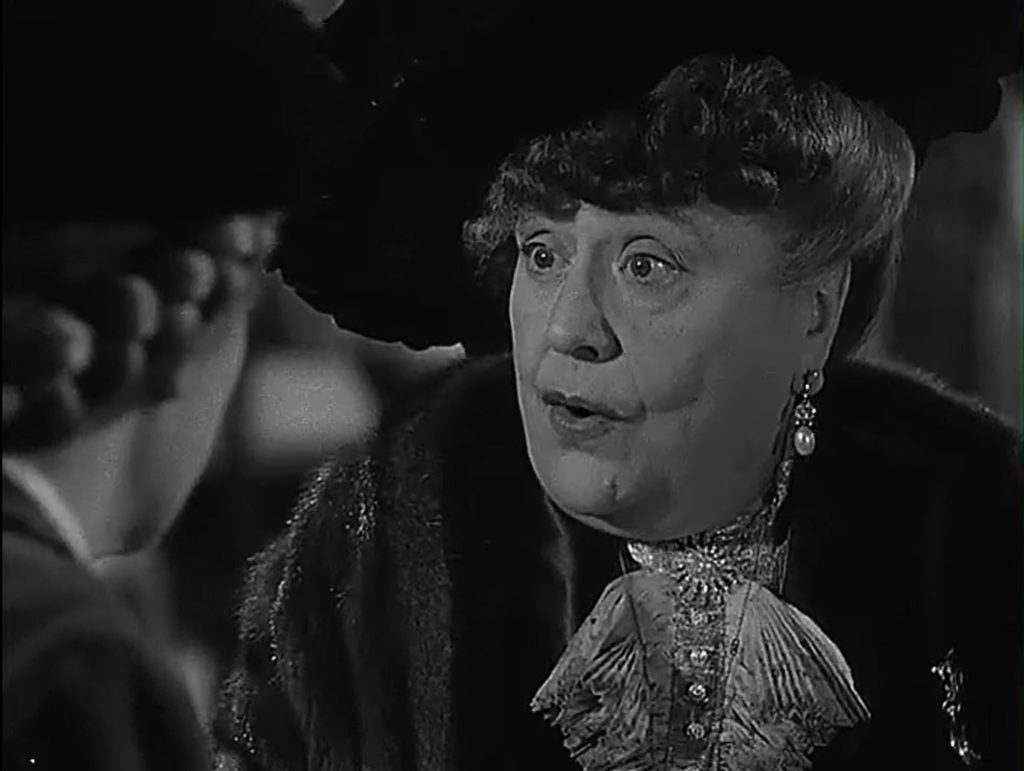
- Nicholas Musuraca’s cinematography
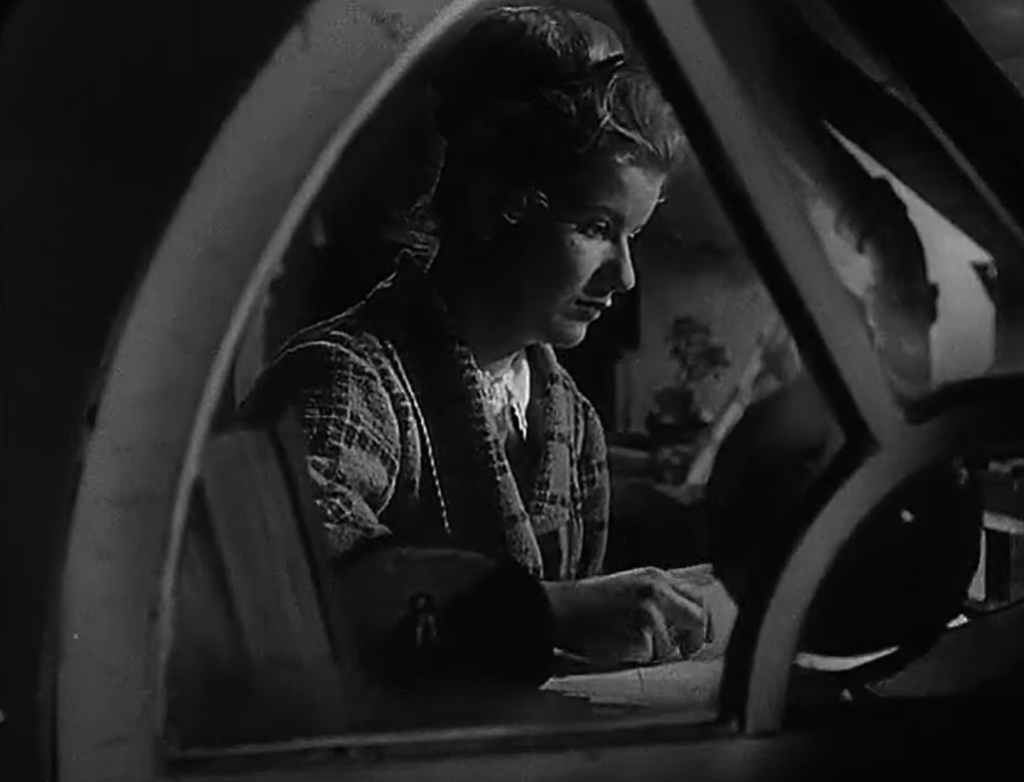
- Excellent use of location shooting in San Francisco
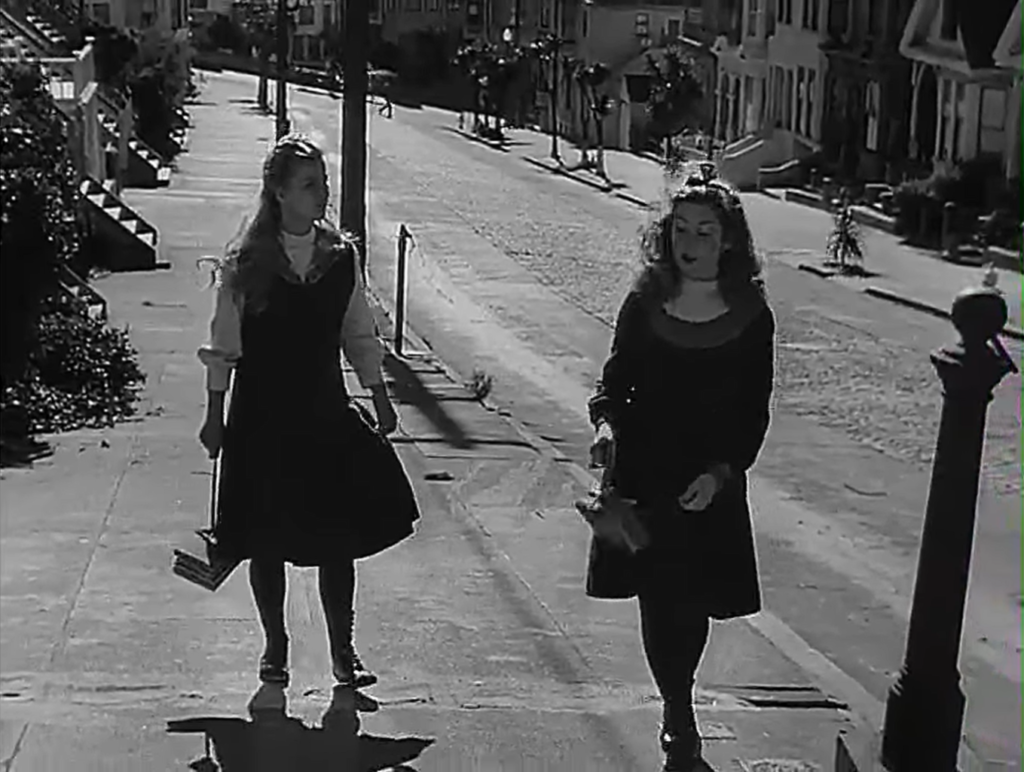
Must See?
Yes, for Dunne’s Oscar-nominated performance, and as a worthy film.
Categories
- Good Show
- Noteworthy Performance(s)
- Oscar Winner or Nominee
Links:
|
